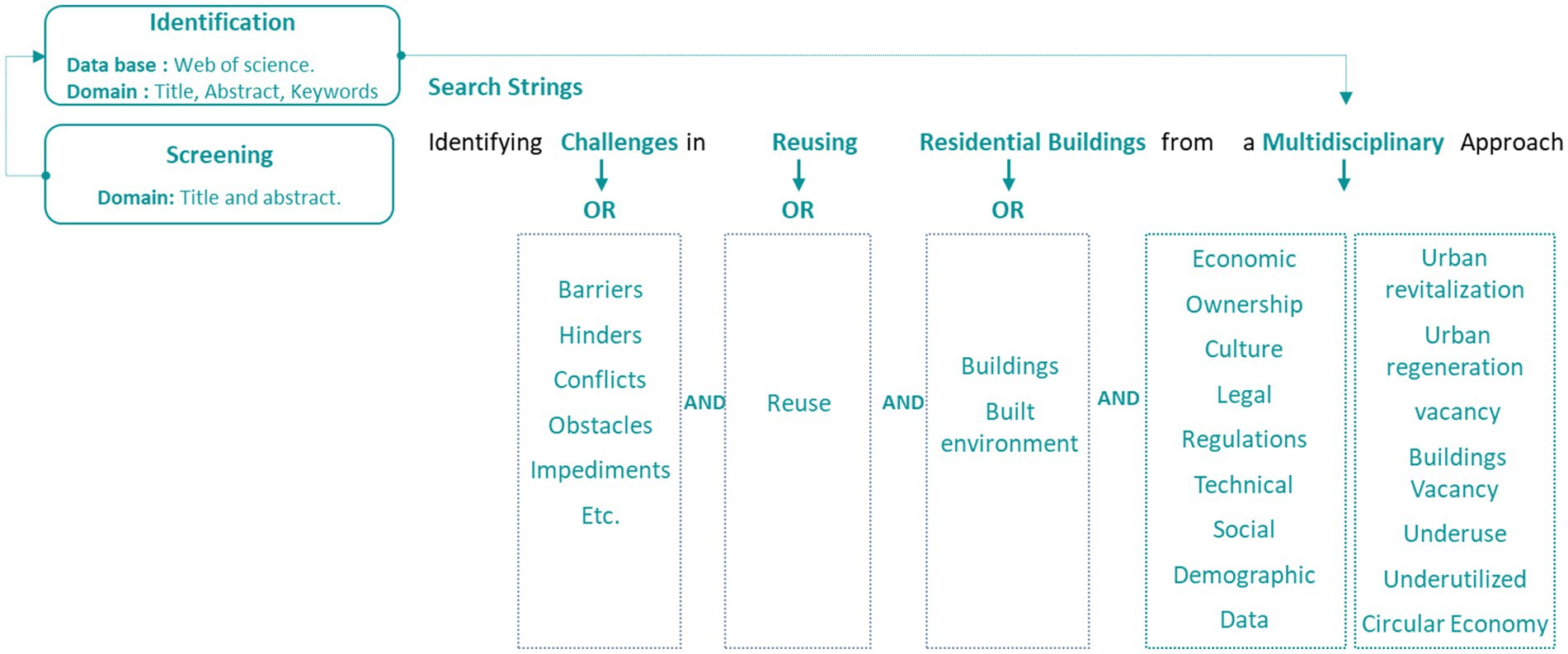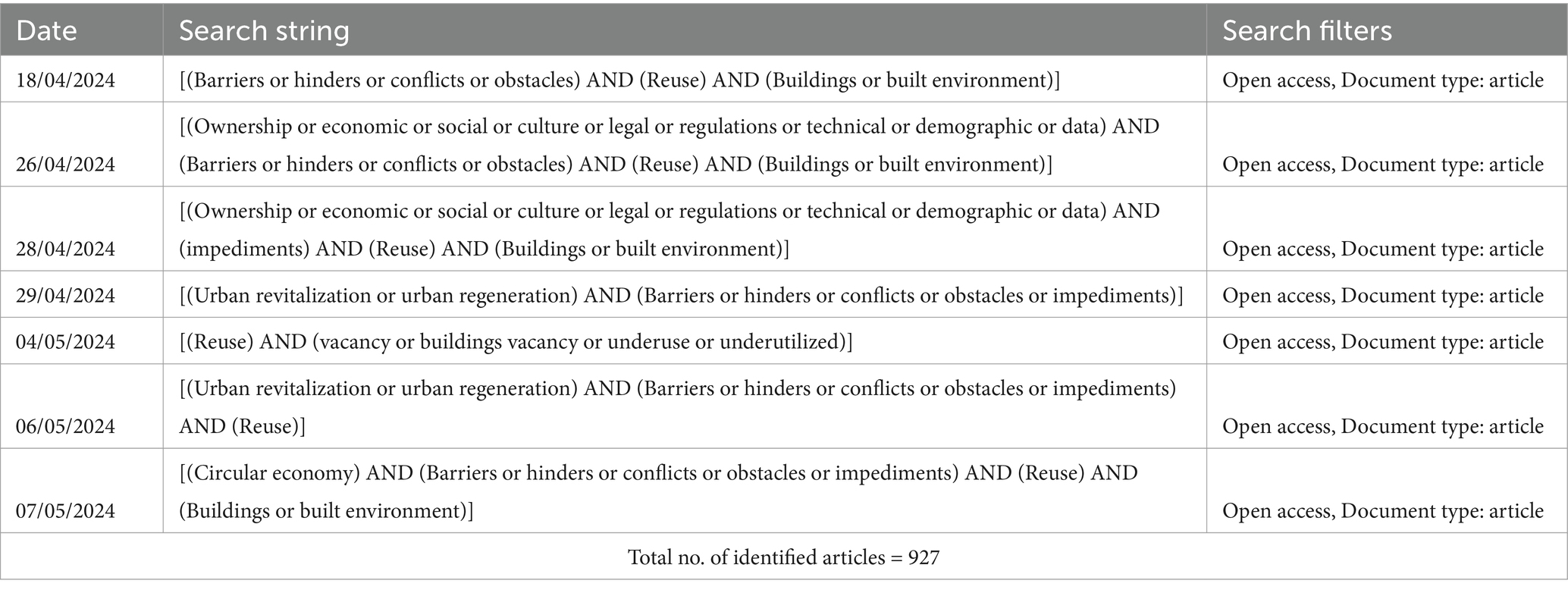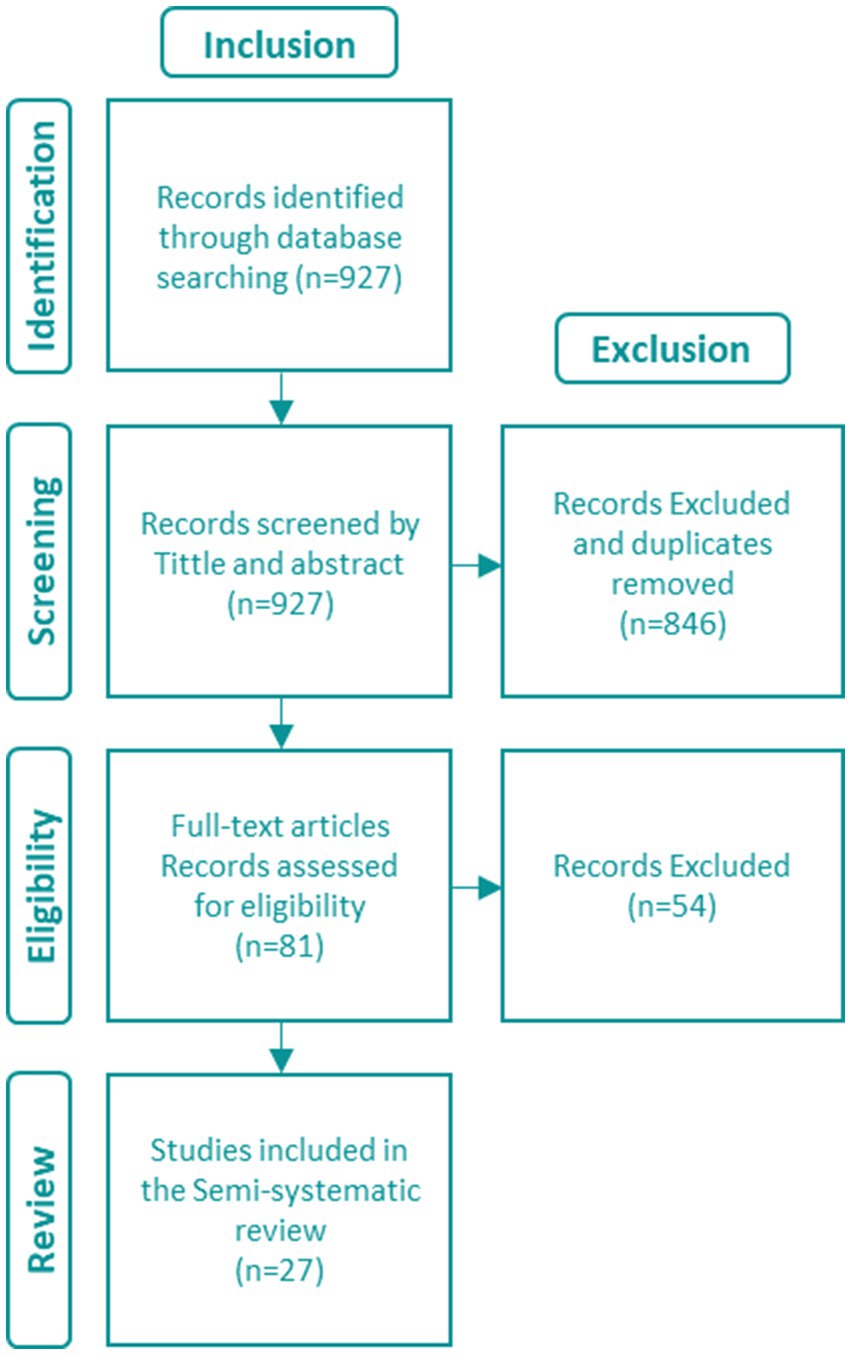- 1Faculty of Environmental Sciences, Dresden University of Technology (TUD), Dresden, Germany
- 2Dresden Leibniz Graduate School (DLGS), Dresden, Germany
- 3Leibniz Institute of Ecological Urban and Regional Development, Dresden, Germany
The reuse of buildings provides environmental, economic, and social benefits, offering a sustainable alternative to new construction and urban expansion. However, the multidisciplinary nature of reuse and the involvement of diverse, often conflicting interests during decision-making create significant challenges. This study aims to identify and categorize the challenges associated with the reuse of residential buildings from a multidisciplinary and global perspective. In Addition to mapping the relationships between these challenges and the scales at which they occur, addressing the research question: What are the challenges and conflicts of interest that hinder the decision-making process in the reuse of buildings? Using a semi-systematic literature review complemented by thematic analysis, this research identifies 75 sub-challenges grouped into 10 overarching themes: (1) economic viability and financial challenges, (2) building conditions, (3) design-technical challenges, (4) location challenges, (5) decision making, (6) policy and regulations, (7) knowledge, capacity, and skills, (8) culture, perception, and awareness, (9) surrounding community, and (10) timeline. The study highlights the strong interconnections between these themes, with economic and financial challenges emerging as a central factor influencing many others. Current research on building reuse often adopts a narrow disciplinary focus, lacks a global multidisciplinary perspective, and overlooks interdisciplinary connections, with limited focus on residential buildings. This paper’s originality lies in addressing these gaps by categorizing the challenges of reuse of residential buildings from multiple disciplines into a comprehensive framework, providing a resource for researchers, educators, policymakers, and practitioners to address the challenges of building reuse and informing the development of decision-support tools.
1 Introduction
Reuse of existing buildings provides a viable solution to demolition and new construction, addressing the environmental challenges posed by urbanization and the construction industry (Highfield and Gorse, 2009; ESPON, 2020; Dell’Anna, 2022). As the largest global consumer of raw materials, the construction sector has increased greenhouse gas emissions by 45% since 1990 (Foster, 2020; WEF, 2016). Reuse of buildings can reduce demolition waste, CO2-equivalent emissions by 34–48% and material usage by 72%, while conserving approximately 56% of embodied energy compared to constructing a new apartment building (Young, 2008; Cellucci, 2021). Similarly, a study suggests that reuse of an entire building can preserve up to 95% of embodied energy (Gursel et al., 2023). With embodied energy as a key driver, there is strong literature consensus on the environmental benefits of reuse (Assefa and Ambler, 2017; Baker et al., 2017; Foster, 2020; Munarim and Ghisi, 2016; Thornton, 2011).
In addition to environmental benefits, reuse of buildings offers significant economic and social benefits, which have heightened interest in this approach as an alternative to urban expansion or new construction (Aigwi et al., 2019; Foster, 2020; Milovanovic et al., 2022; Nocca et al., 2021). However, the reuse of buildings faces challenges, particularly due to conflicting interests among stakeholders involved from different disciplines in the decision-making process (Aigwi et al., 2019, 2021; Amato et al., 2021; Armstrong et al., 2023; Eray et al., 2019).
Despite the growing attention to building reuse and the inherently multidisciplinary nature of its challenges (Foster, 2020; Pintossi et al., 2021a; Zeadat, 2024), research on these challenges remains limited (Pintossi et al., 2021a). Existing studies often treat reuse as a product rather than a dynamic process, with a major focus on the perspectives of architects and managers (Pintossi et al., 2021a). This narrow disciplinary scope risks excluding critical insights from other fields and overlooks the interdisciplinary connections essential to understanding reuse comprehensively (Lanz and Pendlebury, 2022). Furthermore, the challenges identified in current research are often under-theorized and context-specific, lacking a generalized, global perspective (Pintossi et al., 2023).
Within this broader context, limited research specifically addresses the challenges associated with reusing residential buildings. Most existing studies focus on industrial heritage, such as Baeing and Wong (2012), Della Spina et al. (2023), and Ferretti et al. (2014), or on historical buildings and cultural heritage, including Zeadat (2024), Jiang et al. (2023), and Yang et al. (2019). While these studies may occasionally include residential buildings, they do not prioritize them. Even when residential buildings are examined, the focus tends to be on broader strategies and policies rather than deeper exploration of the challenges. For instance, Cellucci (2021) explores circular economy strategies, Rusci et al. (2021) addresses urban demolition policies, and Guo et al. (2021) discusses governance models for historic building conservation. Other studies emphasize architectural and technical aspects, such as retrofitting and building enhancements including Lucchi and Delera (2020), Dauda and Ajayi (2022), and Yang et al. (2019). Additionally, research like Friedrich and Roessler (2023) examines the topic from an urban regeneration perspective, focusing on social dimensions.
To address this gap, this research focuses on structuring and categorizing the challenges to the reuse of buildings in particular residential buildings from a multidisciplinary perspective. This study utilizes a semi-systematic literature review complemented by thematic analysis to identify, categorize and map relationships between these challenges within a global context. To the best of the researcher’s knowledge, this study is the first to integrate insights from diverse disciplines, including adaptive reuse, urban regeneration, cultural heritage, and circular economy, to comprehensively identify and categorize challenges specific to residential building reuse.
This study analyzed 28 academic articles and expands on existing literature by identifying 75 sub-challenges, grouped into 10 overarching themes: (1) economic viability and financial challenges, (2) building conditions, (3) design-technical challenges, (4) location challenges, (5) decision making, (6) policy and regulations, (7) knowledge, capacity, and skills, (8) culture, perception, and awareness, (9) surrounding community, and (10) timeline. Although these challenges span diverse disciplines and scales, they are deeply interconnected and interdependent (Dauda and Ajayi, 2022; Pintossi et al., 2021a). For instance, economic viability is often entangled with policy limitations, building conditions, or a lack of technical expertise. Additionally, certain factors—such as heritage status—emerge as cross-cutting concerns that influence multiple themes. The distinct demands of heritage buildings, including preservation requirements, regulatory limitations, and cultural significance, often shape how reuse challenges are experienced and managed. This highlights the importance considering the nature of the building in reuse strategies, particularly when dealing with heritage assets.
The findings of this study not only address the knowledge gap but also contribute to advancing urban sustainable development by facilitating the adoption and implementation of reuse practices, which provides environmental, social, and economic benefits (Bullen and Love, 2011; Pintossi et al., 2021a; Yung and Chan, 2012). Furthermore, the categorization of these challenges provides a comprehensive framework that can serve as a valuable resource for researchers, educators, policymakers, and practitioners to address the challenges of building reuse and informs the development of decision-support tools tailored to this purpose.
The paper is structured into five sections. The first section introduces the concept of reuse, exploring its definition and presence across various disciplines. The second section outlines the methodology, followed by the results in the third section, which presents the identified sub- challenges, themes, and their relationships. The fourth section includes the discussion and reflections. Finally, the fifth section presents the conclusions.
1.1 Reuse of buildings as spaces—definitions
In the realm of academic research and practical application, there are numerous terms used to describe the process of reusing buildings (Lanz and Pendlebury, 2022; Shahi et al., 2020). These terms encompass refurbishment, retrofitting, rehabilitation, renovation, restoration, modernization, conversion, adaptive reuse, material reuse, conservation, preservation, and more. This section explores the range of terms and definitions associated with building reuse and concludes with the specific definition adopted in this paper.
In their comprehensive literature review, Shahi et al. (2020) classified these terms into two categories. The first, referred to as “refurbishment,” involves the modernization and improvements of existing buildings to enhance their original use without altering the primary function of the building (Foster, 2020; Shahi et al., 2020). The second, termed “adaptive reuse,” focuses on repurposing or reutilizing existing buildings for new functions (Foster, 2020; Foster and Saleh, 2021; Owojori et al., 2021). The difference between the two terms is the change in use in case of adaptive reuse and retaining the original function in case of refurbishment.
Some scholars align with Shahi et al. (2020), emphasizing that adaptive reuse should entail a new use for the buildings (Aigwi et al., 2020; Douglas, 2006; Maselli et al., 2024; Pintossi et al., 2021a). Armstrong et al. (2023) goes further arguing that adaptations without new uses are not adaptive reuse; they can be seen as only adaptations within use, including energy efficiency upgrades, maintenance improvements, new extensions and selective demolition. While some scholars highlight that adaptive reuse involves integrating maintenance, restoration, reuse interventions, retrofit, rehabilitation and redevelopment, refurbishment, rehabilitation, renovation, retrofit or restoration (Dell’Ovo et al., 2021; Foster, 2020; Vardopoulos, 2019).
Some scholars contend that adaptive reuse does not necessarily involve a change of the function of the building (Gravagnuolo et al., 2024; Zeadat, 2024). According to Amato et al. (2021), a building can sometimes retain its original purpose, with adaptive reuse focusing on modernizing its original function or introducing supplementary functions to improve efficiency. This view aligns with the definition from the Encyclopedia of Architecture, Design, Engineering, and Construction, which describes adaptive reuse as keeping a building in service by creating a new use or modifying its original use to meet modern requirements (Wilkes and Packard, 1988).
Regardless of the terminology—whether reuse, adaptive reuse, regeneration, or refurbishment—the common goal is to transform inactive systems into dynamic ones that adapt to evolving modern needs (Gravagnuolo et al., 2024). This paper adopts this perspective, aligning with the definition provided in the Encyclopedia of Architecture, Design, Engineering, and Construction, as the guiding framework. The term “reuse of buildings” is used throughout to encompass all forms of adaptation aimed at extending a building’s lifespan and restoring it to active use.
1.2 Reuse across disciplines
The reuse of buildings is a multifaceted field of research involving diverse stakeholders and spans various disciplines (Foster, 2020; Zeadat, 2024). This section highlights its multidisciplinary nature and explores its connections to emerging fields and concepts. Reuse of buildings practices require the involvement of a broad range of actors, including building managers, developers, property owners, local authorities, citizens, investors, and, in some cases, heritage consultants. This diverse stakeholders reflects the interdisciplinary scope of reuse, encompassing architecture, engineering, and heritage studies (Pintossi et al., 2021a). Foster (2020) describes building reuse as a “nexus issue” in urban contexts, necessitating interdisciplinary collaboration to address its multifaceted challenges. Similarly, Nocca et al. (2021) note that functional reuse involves issues spanning restoration, sociology, and technology, underscoring the need for a transdisciplinary approach. This perspective is echoed by Amato et al. (2021), who argue that addressing building reuse requires both multidisciplinary and transdisciplinary strategies and that such approaches should involve experts from different fields and societal stakeholders who have a stake in the issue.
Lanz and Pendlebury (2022), stress the importance of a multidisciplinary perspective in reuse of buildings. They caution against rigid, discipline-specific definitions of reuse, as these may limit theoretical and practical contributions and hinder interdisciplinary collaboration. Adopting a broader, more inclusive framework is essential to advancing the debate and addressing the challenges associated with building reuse effectively.
Beyond its disciplinary breadth, building reuse has become increasingly linked to fields such as Circular Economy (CE) and Urban Regeneration. Reuse of buildings has emerged as a vital strategy for initiating circular processes in cities (Cellucci, 2021; Dell’Ovo et al., 2021; Foster, 2020; Nocca et al., 2021; Pintossi et al., 2021a). The CE framework emphasizes reducing resource extraction and environmental impacts by extending the lifecycle of products and materials through reuse (Pintossi et al., 2021a). In this context, reusing obsolete, abandoned, or underutilized buildings aligns closely with CE principles, extending their functional lifespan (Cellucci, 2021; Dell’Ovo et al., 2021). This is particularly significant given that a large proportion of all extracted materials resides in the built environment (Eray et al., 2019), alongside substantial embodied energy in existing structures (Young, 2008).
Prioritizing building reuse allows urban development to shift from expansion and urban sprawl toward optimizing existing resources and extending the life cycle of built assets (Della Spina et al., 2023). This approach reduces the need for demolition and reconstruction, minimizing material extraction and soil depletion (Armstrong et al., 2023; Eray et al., 2019; Gravagnuolo et al., 2024). Furthermore, growing shortages of raw materials have increased acceptance of CE principles within the construction industry, driven by social, environmental, and economic considerations (Eray et al., 2019).
Similarly, urban regeneration—or urban revitalization—contributes to sustainable development by repurposing abandoned land and buildings, enhancing energy efficiency, and improving environmental quality (Xie et al., 2024). It emphasizes revitalizing urban areas by addressing the physical state of buildings and public spaces to counter socio-economic decline and prevent further degradation (Amado and Rodrigues, 2019; Nzimande, 2023). Consequently, the reuse of buildings, including heritage structures, plays a key role in broader urban regeneration strategies (Capolongo et al., 2019; Pintossi et al., 2021a).
2 Methodology
To address the research question, this article follows two main steps, as illustrated in Figure 1. The first step involves data collection through a semi-systematic literature review, followed by data analysis in the second step using thematic analysis. This section outlines the approach taken for both the semi-systematic literature review and the thematic analysis.
2.1 Data collection—semi systematic literature review
As previously explained the reuse of buildings is studied and used as a strategy across different disciplines (Foster, 2020; Zeadat, 2024). In order to comprehensively answer the research question on identifying the challenges of reuse of buildings it is important to consider the challenges identified from different disciplines including Circular economy, urban revitalization, and cultural heritage.
This article, therefore, employs a semi-systematic literature review approach, adapting the PRISMA guidelines (Page et al., 2021) to ensure a systematic and transparent identification of relevant articles on topics that span different disciplines (Prasetyani et al., 2023; Snyder, 2019; Wong et al., 2013), while avoiding the limitations associated with strict inclusion criteria in fully systematic reviews (Snyder, 2019; Uttley et al., 2023).
The semi-systematic review is conducted as outlined in the following steps.
2.1.1 Step 1: identification of articles
The literature review on challenges in reusing buildings was conducted using the Web of Science database. The web of science database was selected since it is a multidisciplinary database with a wide range of academic sources, offering advanced search features (Norris and Oppenheim, 2007). Initially, other databases, were considered for identifying relevant articles. However, after analyzing the data extracted from the Web of Science database, the search results reached a satisfactory saturation point. No new concepts, codes, or main themes emerged during this process. Additionally, some themes and codes were repeated across sources, indicating that the key challenges in the reuse of buildings had been thoroughly identified.
To create the search strings, keywords were identified from the main research question, then expanded with synonyms, as shown in Figure 2. The research question focuses on identifying challenges in reusing residential buildings from a multidisciplinary approach. In this sense, the Core search terms included “challenges,” “reusing,” “residential buildings,” and “multidisciplinary.” Synonyms were found for each main term; for example, “challenges” included words like “barriers,” “hinders,” “conflicts,” “obstacles,” and “impediments.” The same approach was used for the other main keywords. For “multidisciplinary,” rather than direct synonyms, related fields were identified, such as “economic,” “ownership,” “cultural,” “legal,” “regulatory,” “technical,” “social,” “demographic,” and “data.” When searching using the keyword “residential buildings,” therefore the results were limited, so the search was broadened by including synonyms such as “buildings” and “built environments.”
To ensure inclusion of relevant disciplines related to reuse, a preliminary review of titles and abstracts from the initial set of search strings was conducted. This review helped identify additional keywords—such as “urban revitalization,” “urban regeneration,” “vacancy,” “building vacancy,” “underuse,” and “underutilized”—aimed at capturing broader multidisciplinary notions. These new keywords were then combined to create updated search strings. The search, limited to English-language publications, was performed across titles, abstracts, and keywords, covering all publication years through April 18 to May 7, 2024, using the search string shown in Table 1.
Table 1 presents the search strings used, the dates of each search, and the filters applied in the search engine.
2.1.2 Step 2: screening of the articles
The selected articles underwent a two-phase manual screening process. In the initial screening phase, titles, abstracts, and conclusions of 927 identified documents were reviewed, resulting in the exclusion of 846 documents. The remaining 81 documents then proceeded to a full-text review. The results of the full-text screening led to the exclusion of 54 additional documents, leaving 27 articles that met the inclusion criteria for this study as shown in the flow diagram in Figure 3. The inclusion criteria, shown in Figure 4, were used to exclude irrelevant articles and included the following:
a) The definition of “Reuse,” Articles addressing the reuse of buildings as functional spaces were included, whereas those addressing reuse at the level of components or materials were excluded. Additionally, articles discussing reuse for the same function, into new functions, or mixed use involving both the original and new functions were also included. In general, the emphasis was on articles that addressed the reuse of buildings as functional spaces, regardless of the terminology used by the authors or discipline within which reuse of buildings is included, such as adaptive reuse, rehabilitation, or urban regeneration. For instance, studies on urban regeneration or revitalization strategies may involve the reuse or demolition of existing buildings. Jin et al. (2020), for example, focuses on demolition rather than reuse and is therefore excluded from this study.
b) Typology and function of the Building: Articles on the reuse of residential buildings, buildings without a specific function, and cultural heritage buildings were included. Cultural heritage encompasses various typologies, including worship spaces, royal residences, commercial and industrial sites, offices, civic, and military buildings (Foster, 2020; Gravagnuolo et al., 2024). However to ensure the relevance of the article, and consistency, studies included only addressed the residential or general cultural heritage reuse. Articles focusing primarily on industrial heritage, markets, or other function-specific reuse scenarios were excluded. Studies that discussed the reuse of cultural heritage buildings more broadly, without tying the challenges exclusively to their original function, were included.
Some studies, such as Jiang et al. (2023), examined challenges at both the building and urban scales. In such cases, only challenges at the building scale were extracted for analysis. Similarly, studies that combined general and function-specific challenges—such as Pintossi et al. (2021a, 2021b) and Dell’Ovo et al. (2021)—were included, but only the general challenges related to cultural heritage reuse were extracted. Function-specific content, like those tied explicitly to industrial or castle functions, was excluded.
c) Relevance to addressing the research questions: The article’s relevance is evaluated based on its contribution to answering the main research questions, particularly in addressing the challenges of reuse of residential buildings.
d) Additional criteria for selection included the use of the English language, open access availability.
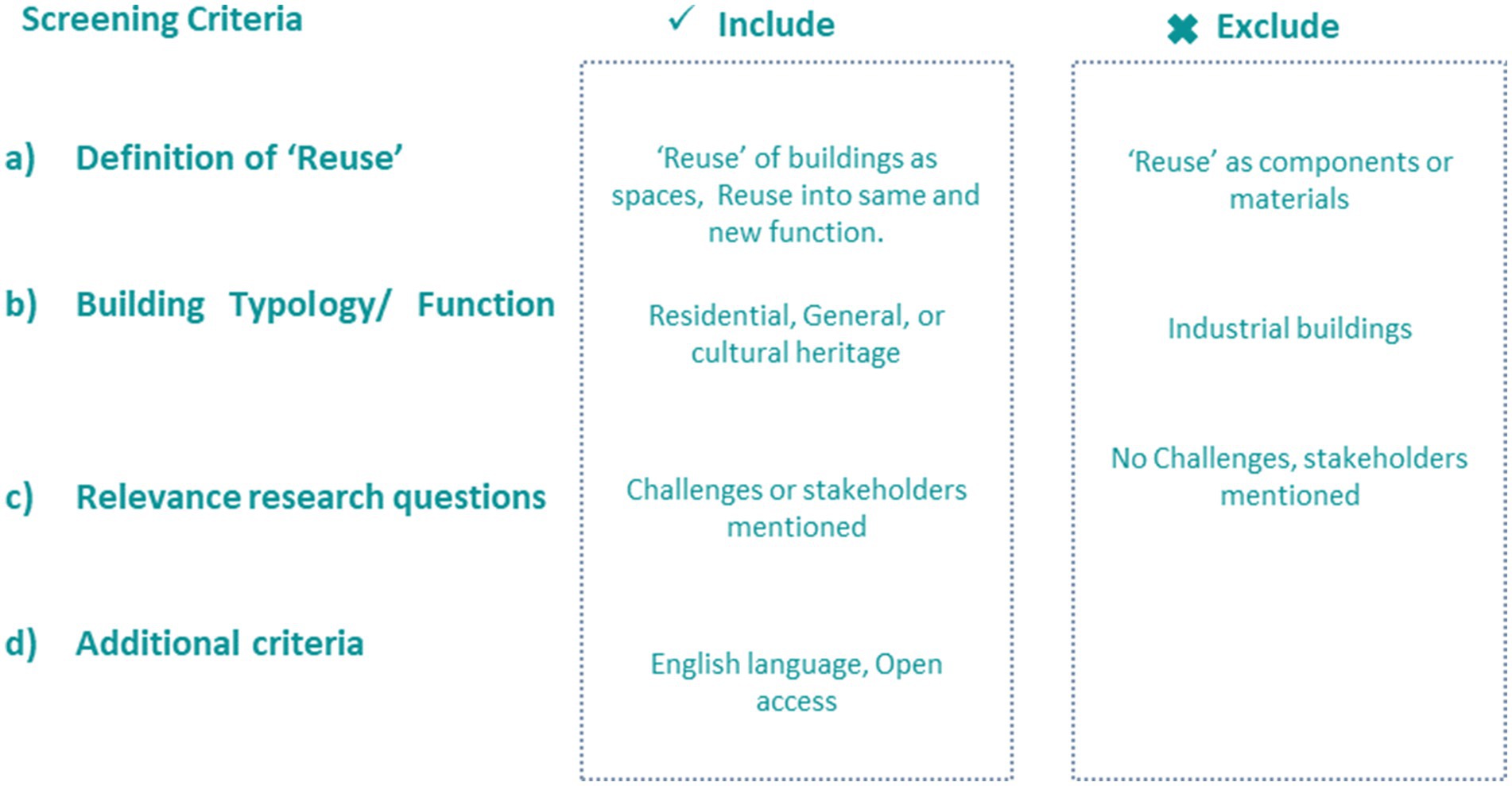
Figure 4. Diagram demonstrating the inclusion criteria for the selection of the documents. Source: Author.
2.1.3 Step 3: data extraction and analysis
In this step, needed data were extracted from each of the selected 27 articles to address the research question. The extracted data includes (a) Bibliographic information: Author, Year of publication, Title, and Journal where the paper is published. (b) Context information: the type of building, whether it undergoes reuse for a new purpose or maintains its original function, and region (c) extracted text: a quotation of the text where the challenges of reuse of buildings were mentioned. This information was systematically extracted from each article and recorded in an Excel sheet (see Supplementary File 1), as illustrated in Table 2.
Some studies such as Jiang et al. (2023) addressed the challenges of reusing building complexes that involve both building and urban scales. In such a case the article was included, but only challenges related to building spaces were extracted to be included for analysis. Additionally, the article by Pintossi et al. (2021a), which addresses both general and function-specific (industrial) challenges, was included; however, only the data on general reuse challenges were extracted, while the function-specific industrial challenges were excluded.
2.2 Data analysis—thematic analysis
After extracting the data from the selected articles, a thematic analysis was employed to code and categorize the challenges mentioned in the text, as outlined in this section. Thematic analysis was selected because it systematically recognizes, analyses, structures, and describes prevalent themes within a dataset by coding specific statements into categories that represent the phenomenon of interest (Cruzes and Dyba, 2011; Creswell, 2014; Nowell et al., 2017). The thematic analysis involved two main phases: first, coding the text, where descriptive labels (codes) were assigned to the challenges mentioned in the text. In this study, a ‘challenge’ includes any obstacle, problem, impediment, constraint, or hurdle that hinders the reuse of buildings (Pintossi et al., 2021b). After coding all the text the codes were grouped into broader themes, each representing a topic shared by the descriptive labels (Codes). Ultimately, this process produced a general theme that represents the main challenge, with sub-challenges represented by the descriptive codes.
The text coding process was primarily conducted manually by the author, with additional support from the AI language model, ChatGPT. Initially, the author manually coded the text, then provided it to the AI to identify any additional codes or ideas the author might have missed. However, the author maintained full control over the final output, deciding whether to incorporate the AI’s suggestions, merge them with their own results, or disregard them entirely.
In the manual coding, the aim was to identify challenges based on ideas and meanings rather than specific words. For instance, Amato et al. (2021) note that “the main difficulty is to find innovative solutions, able to reconcile social, economic and environmental points of view, that are considered positive by the entire society.” while Lucchi and Delera (2020) describe a similar issue as “the dialogue understanding between partners,” while Pintossi et al. (2021a) refer to it as “the variety of stakeholders,” and Pintossi et al. (2023) mention “interest – conflicting/different/diverging interests.” All these descriptions were assigned the same code: C6.1. Balancing Diverse Interests and Perspectives, as they address the challenge of reconciling different viewpoints and achieving a balance among stakeholders through a holistic solution that accommodates diverse perspectives and interests.
It is also important to note that some challenges were explicitly mentioned, while others were inferred from context or deeper insights. For instance, Cellucci (2021) states that “the circular regeneration of the built environment depends on its adaptability to the following categories of variables: Internal variables: uncertainties concerning the social and economic context, relative to the variability of users’ needs and the satisfaction of psychological and functional needs. External variables: uncertainties regarding system performance in relation to environmental disasters.” Here, Cellucci (2021) does not explicitly mention challenges to building reuse but rather describes conditions for adaptability in circular regeneration. Nevertheless, these conditions were coded as C3.3. Building Performance in Adverse Conditions and C3.2. Building Adaptability to reflect the underlying challenges. This approach to coding based on inferred meanings allowed for a comprehensive capture of relevant themes across various descriptions and disciplines.
In using the AI model, the author firstly analyzed the text with thematic analysis to identify codes and themes, which were then provided to ChatGPT along with the original text. ChatGPT offered a refined version of the identified codes and sometimes suggested new ones. The author then assessed these suggestions, choosing to include relevant ones or exclude them as necessary.
As the analysis progressed, similar concepts and ideas were identified, improving the quality and consistency of the codes and themes. Each descriptive label (code) was given a clear definition, which facilitated the grouping of related codes into broader themes. Once the labels were assigned and the codes formulated, they were organized into 75 distinct codes and 10 overarching themes, as illustrated in Figure 5. These themes will be discussed in detail in the next section.
3 Results
This section presents the results of the thematic analysis, detailing the identified sub-challenges (75 codes) and main challenges (10 themes) that emerged from the data as shown in Figure 6. The analysis further examines the relationships between these codes and themes, offering insights into their interconnections and underlying patterns.
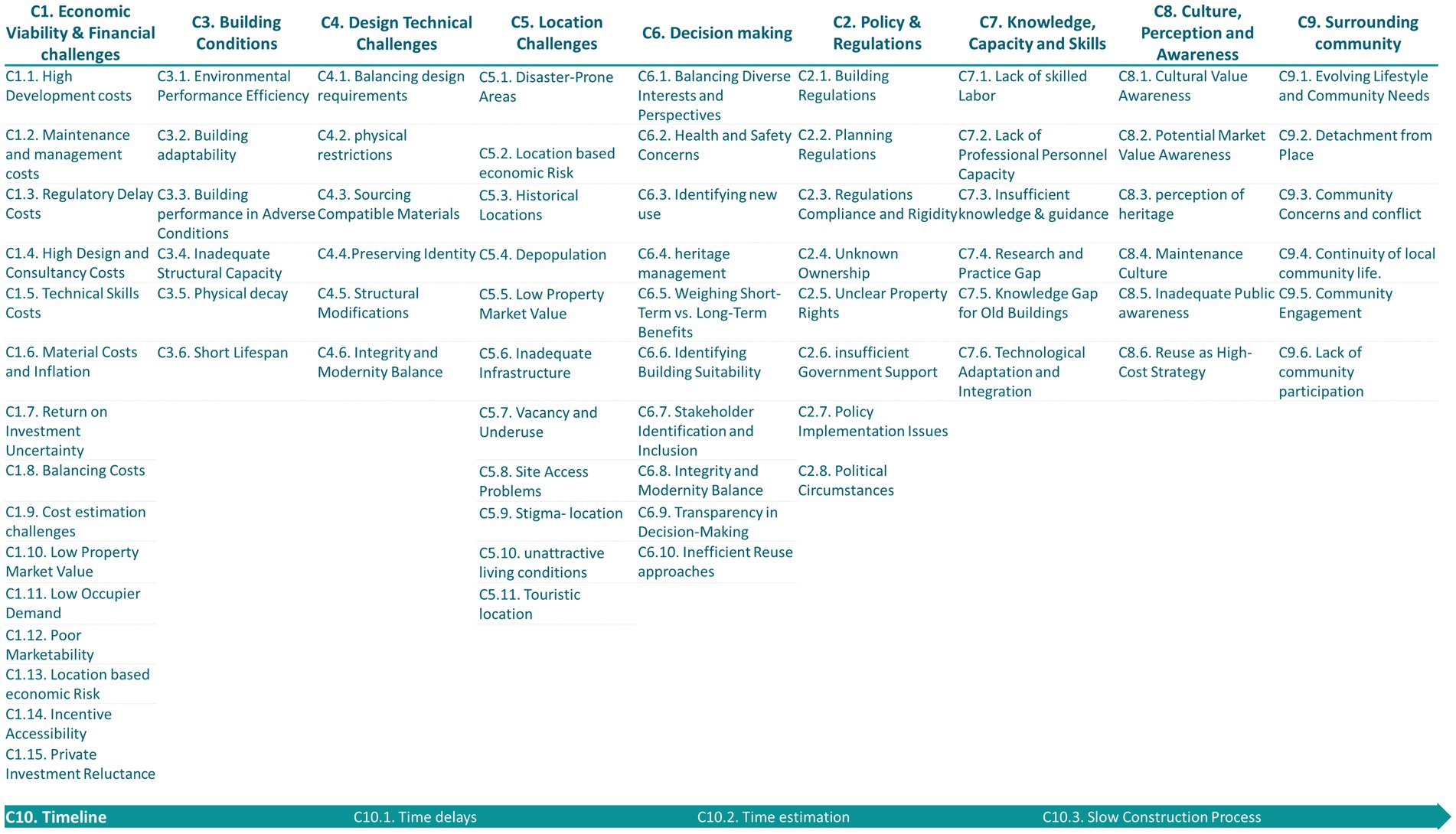
Figure 6. Diagram illustrating the thematic categories of the challenges of reuse of buildings. Source: Author.
3.1 General themes—challenges categorization
Through an iterative process of reading and coding concepts from the extracted text, this study identified 75 codes and 10 overarching themes. Each theme represents a major challenge, with sub-challenges (codes) categorized under them. For each theme, a definition will be provided, along with a description of the specific sub-challenges that fall within it. Each sub-challenge (code) will also be defined to clarify the specific aspects of the challenge it addresses. This section offers an explanation of each theme, detailing the related codes and their definitions.
3.1.1 Economic viability and financial challenges
The reuse of buildings is often considered a more cost-effective and faster alternative to demolition and rebuilding (Aigwi et al., 2018, 2020; Bullen and Love, 2011; Douglas, 2006; Heath, 2001). However, the literature also highlights significant economic challenges associated with building reuse. This theme explores the economic viability and financial obstacles that impact the reuse of buildings, this theme includes 15 sub challenges as explained in detail in Table 3.
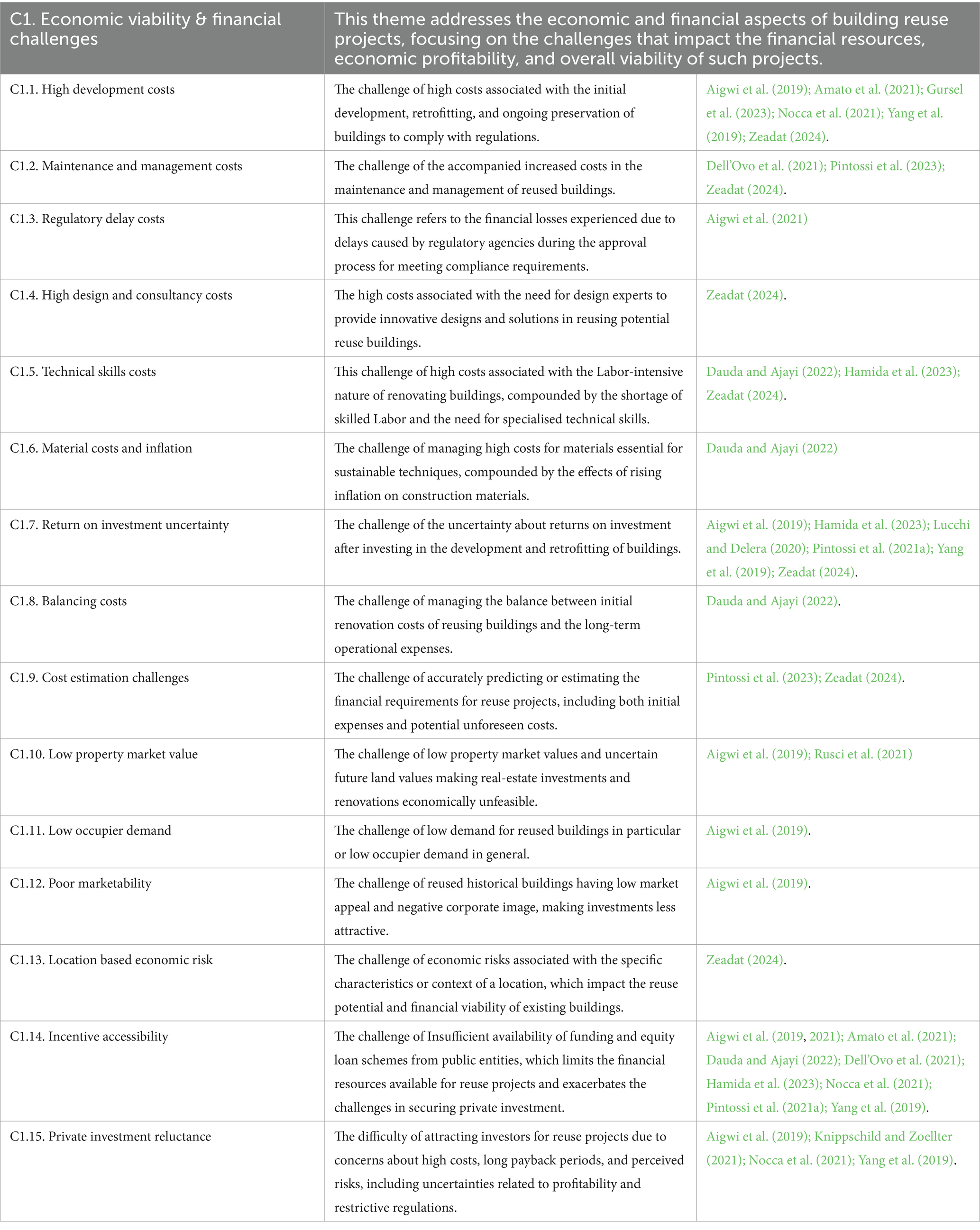
Table 3. An overview of the identified sub-challenges (codes) and their definitions in the economic viability and financial challenges theme.
These sub-challenges fall into three main groups. First, technical economic challenges include the high development costs of buildings, high maintenance and management costs, material costs and inflation rates, high technical skills costs and high design and consultancy costs. Second, economic uncertainty covers challenges such as cost-estimation, location risks, return on investment uncertainty, and financial loss due to regulatory delays. Lastly the limited financial resources such as incentive accessibility and private investment reluctance.
These sub-challenges fall into three main groups. First, Technical Economic Challenges include high development costs, higher maintenance and management costs of reused buildings than newly built ones, material costs and inflation rates, and the significant expenses for technical skills, design, and consultancy. Second, Economic Uncertainty encompasses challenges such as accurate cost estimation, location risks, return on investment uncertainty, and potential financial loss due to regulatory delays. Lastly, Limited Financial Resources covers constraints like restricted access to incentives and a general reluctance from private investors to fund reuse projects.
These sub-challenges are often interconnected. For instance, access to financial incentives from public entities—one of the most frequently discussed challenges in the literature (Aigwi et al., 2019, 2021; Amato et al., 2021; Dauda and Ajayi, 2022; Dell’Ovo et al., 2021; Hamida et al., 2023; Nocca et al., 2021; Pintossi et al., 2021a; Yang et al., 2019)—further complicates efforts to attract private investment, which is already cautious due to high development costs, skilled labor expenses, and financial uncertainties in reuse projects. Recognizing and understanding these sub-challenges is essential to ensure that building reuse projects are sustainable and economically viable over the long term.
3.1.2 Building conditions
This theme encompasses the challenges related to the physical state of buildings that impact their potential for reuse. It identifies six sub-challenges, detailed in Table 4. These sub-challenges focus on factors such as the structural soundness of a building, remaining lifespan, and signs of physical decay. Additionally, this theme considers the adaptability of older buildings to meet modern requirements, including spatial needs and environmental performance standards.
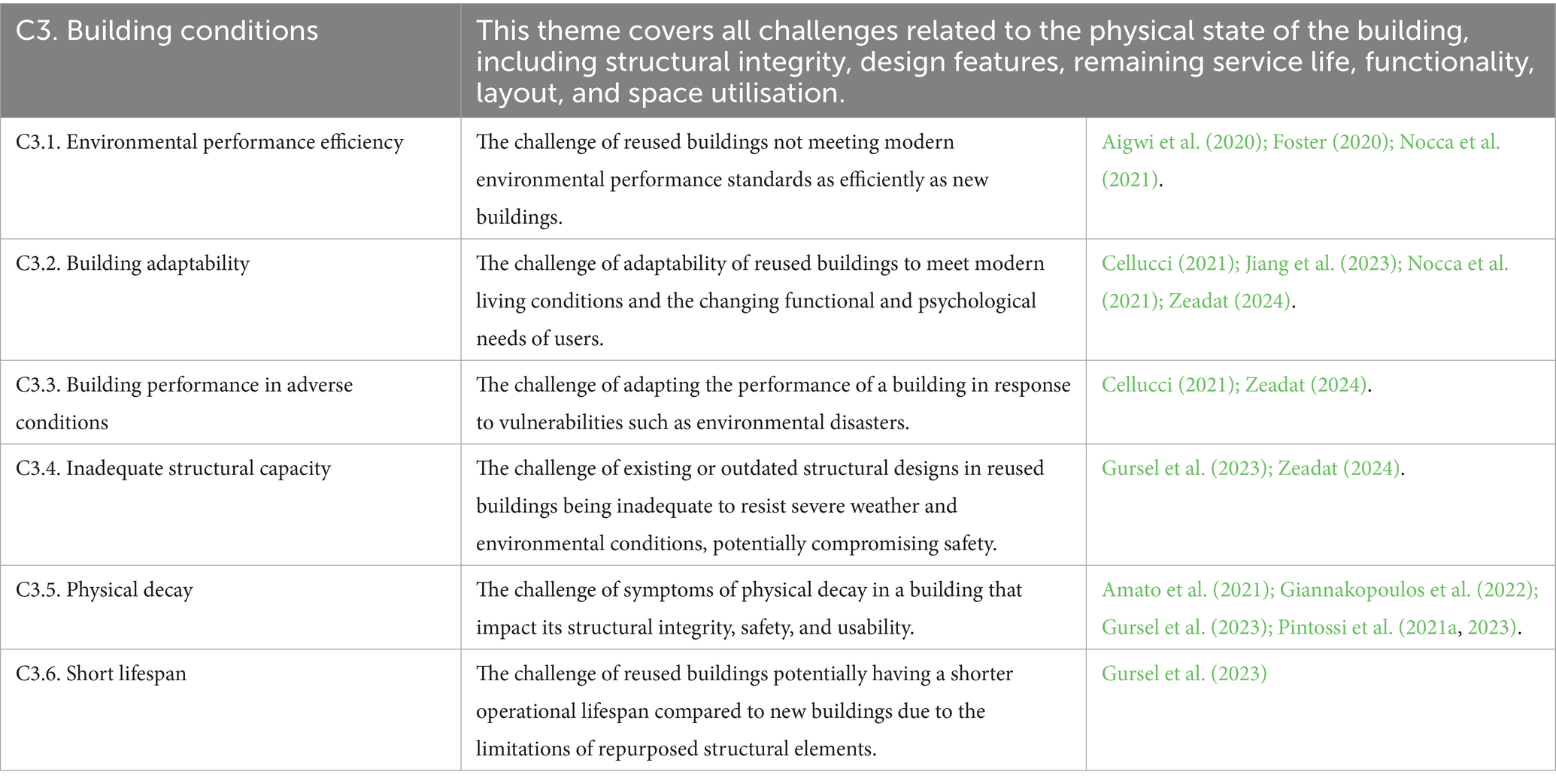
Table 4. An overview of the identified sub-challenges (codes) and their definitions in the building conditions challenges theme.
Achieving modern environmental standards in old buildings is particularly challenging (Aigwi et al., 2021; Foster, 2020; Nocca et al., 2021), especially in residential structures. Navratil et al. (2021) highlight that adaptation complexity increases with the age of the residential structure, especially when architectural heritage preservation takes precedence over sustainable solutions.
3.1.3 Design technical challenges
This theme encompasses the technical challenges involving design considerations that arise in reuse of buildings. It identifies six sub-challenges, detailed in Table 5. Which focus on the interplay between design decisions and technical constraints. These include balancing the design requirements of diverse stakeholders, addressing physical restrictions imposed on design requirements, dealing with structural modifications, sourcing compatible materials, preserving a building’s spatial identity, and maintaining its essential character while integrating modern elements.
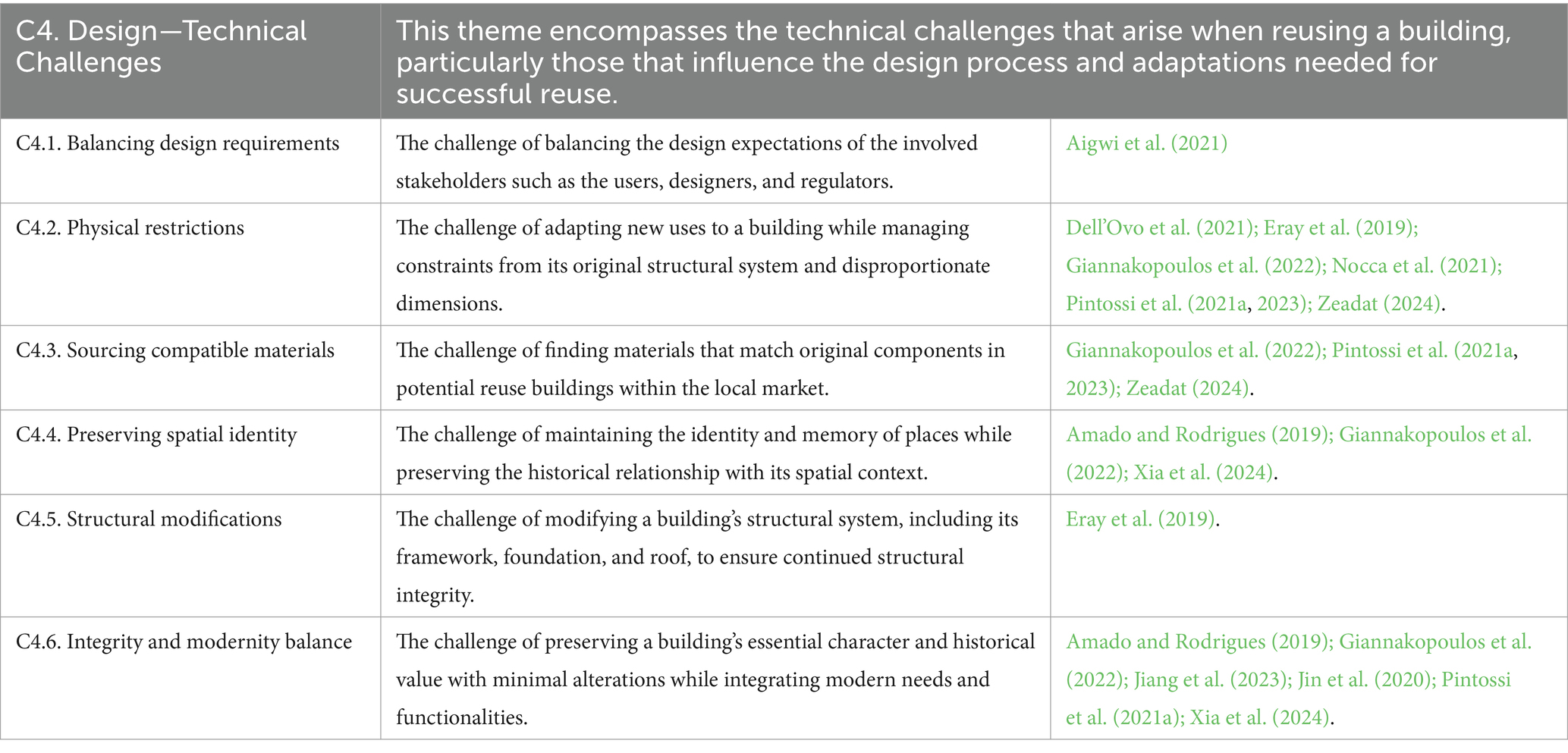
Table 5. An overview of the identified sub-challenges (codes) and their definitions in design-technical challenges theme.
Reused buildings often feature predefined structural systems, spatial layouts, and dimensions that may restrict their adaptability to contemporary social needs (Dell’Ovo et al., 2021; Eray et al., 2019; Giannakopoulos et al., 2022; Nocca et al., 2021; Pintossi et al., 2021a, 2023; Zeadat, 2024). These physical constraints are particularly significant in residential buildings, as Cellucci (2021) highlights, where evolving user demands can hinder reuse if the structure lacks sufficient flexibility. While the sub-challenges in this category are interconnected, each represents a distinct aspect of the broader design and technical difficulties encountered in building reuse.
3.1.4 Location challenges
This theme encompasses challenges that extend beyond the physical boundaries of individual buildings to encompass the building site and its surrounding context. It identifies 11 sub-challenges, detailed in Table 6. These include tangible, physical aspects such as disaster-prone areas, site access difficulties, historic nature of locations, depopulation, inadequate infrastructure, vacancy and underuse, and touristic locations. Additionally, intangible factors such as location-based economic risks, low property market value, social stigma associated with certain contexts, and the unattractive living conditions in certain contexts.
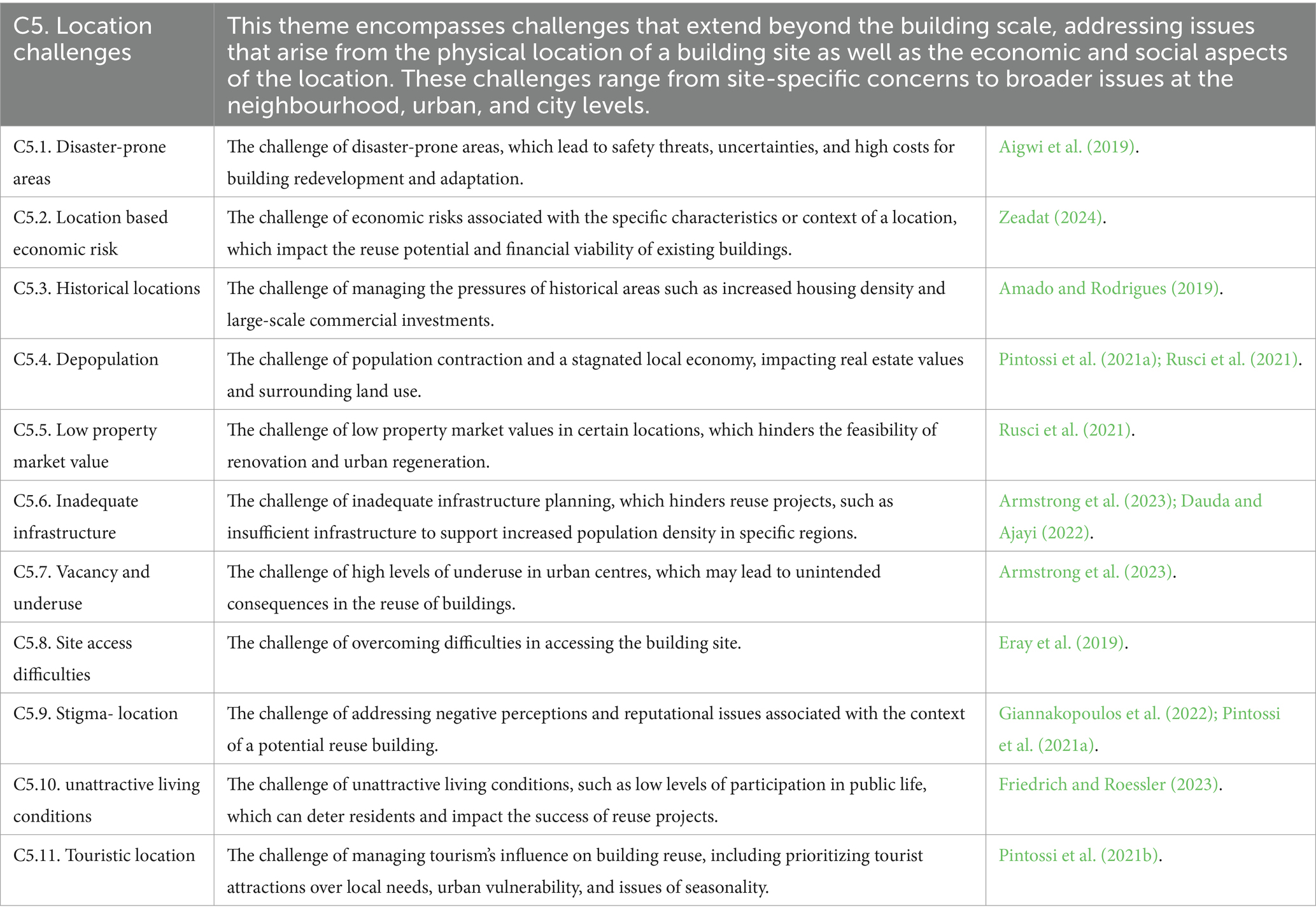
Table 6. An overview of the identified sub-challenges (codes) and their definitions in location challenges theme.
These challenges span site-specific concerns to broader issues at the neighborhood and city level. They play a critical role in determining the viability and success of reuse projects, as Gursel et al. (2023) emphasize, careful evaluation of locational factors is essential when assessing the economic, social, and environmental aspects of building reuse. Similarly, Armstrong et al. (2023) highlight the negative impact high vacancy rates might impose on the feasibility and outcomes of reuse efforts.
3.1.5 Decision making
This theme addresses challenges that arise from and are associated with the decision-making process for the reuse of buildings. It identifies 10 sub-challenges, detailed in Table 7. These sub-challenges involve prioritizing and managing trade-offs, such as balancing the diverse interests of various stakeholders, identifying the most suitable new use for a building, weighing short-term versus long-term benefits, prioritizing buildings for reuse when resources are limited, and finding a balance between preserving integrity and embracing modernity. Other sub-challenges pertain to the approach to decision-making in reuse projects, including heritage management, addressing health and safety concerns, ensuring transparency, identifying relevant stakeholders, and navigating inefficiencies in existing reuse practices.
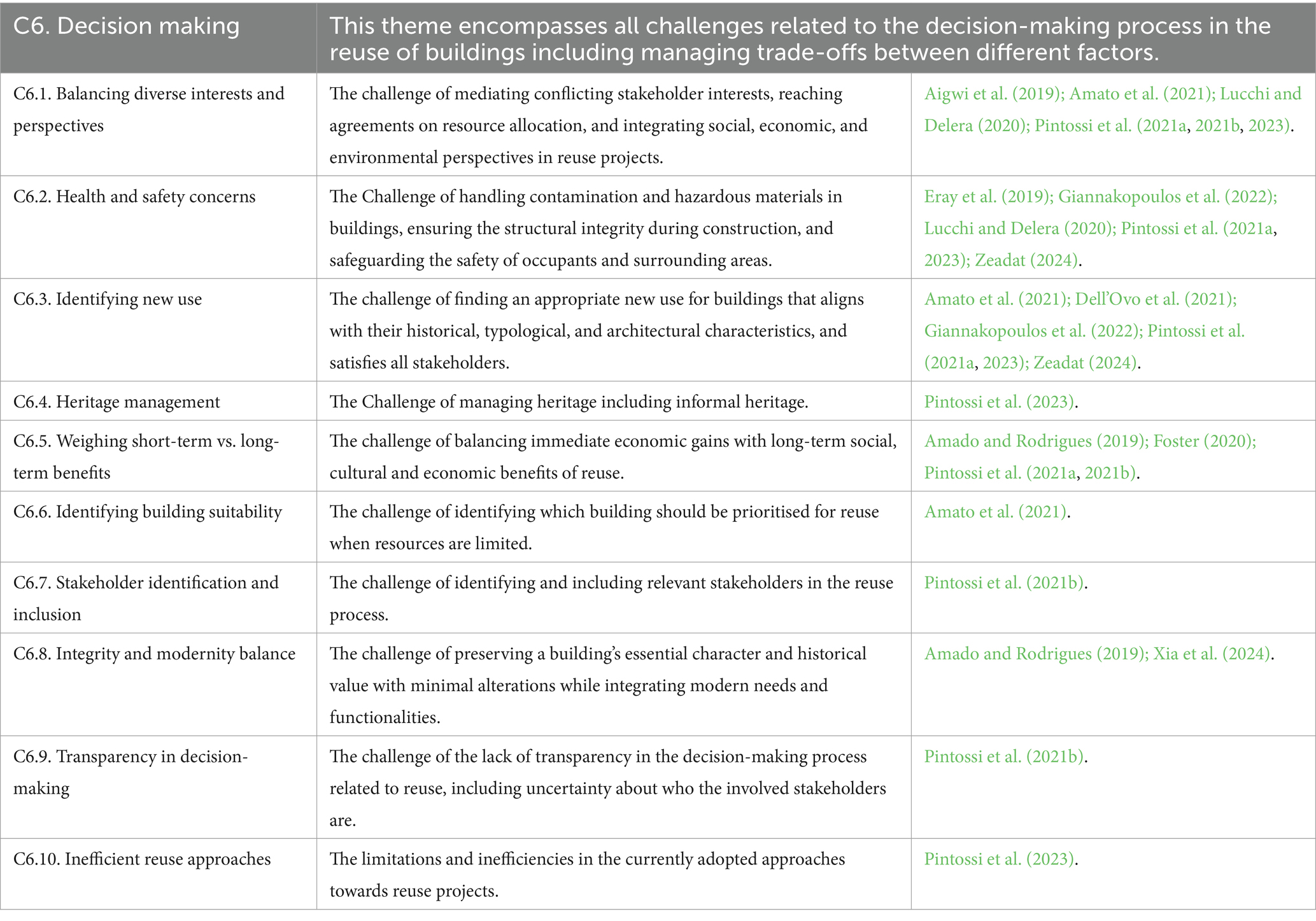
Table 7. An overview of the identified sub-challenges (codes) and their definitions in the decision making theme.
Together, these challenges highlight the complexity of reuse decision-making, which involves managing diverse interests and prioritizing between alternative solutions. This process operates at various scales, from individual buildings to entire cities.
3.1.6 Policy and regulations
This theme addresses the regulatory and policy challenges affecting the reuse of buildings and identifies eight sub-challenges outlined in Table 8. These include issues related to building and planning regulations, alongside legal complexities such as unclear property rights and unknown ownership. Further challenges arise from the rigidity in implementing these regulations, as well as policy-related obstacles like insufficient government support, difficulties in policy implementation, and the influence of political circumstances on policy development and execution. These challenges are present at both the building and city scales. Addressing these challenges requires strong leadership through Public administration, advocacy-driven policies, and government entities who are critical stakeholders in initiating and guiding decision-making processes for building reuse (Amato et al., 2021; Giannakopoulos et al., 2022; Gursel et al., 2023; Jiang et al., 2023).

Table 8. An overview of the identified sub-challenges (codes) and their definitions in policy and regulations theme.
3.1.7 Knowledge, capacity and skills
This theme focuses on challenges related to the knowledge and skills required for successfully implementing reuse projects. It identifies six sub-challenges, which are detailed in Table 9. Some challenges involve a lack of essential skills, ranging from craftsmanship to professional expertise. Others point to insufficient knowledge and guidance for reuse projects, as well as a knowledge gap concerning old buildings. This gap can lead to difficulties in adapting modern technologies to older structures. Additionally, there is a gap between research and practical applications. These challenges, which are most apparent at the building scale, underline the critical role of addressing knowledge and skill deficiencies in improving the success of reuse projects.
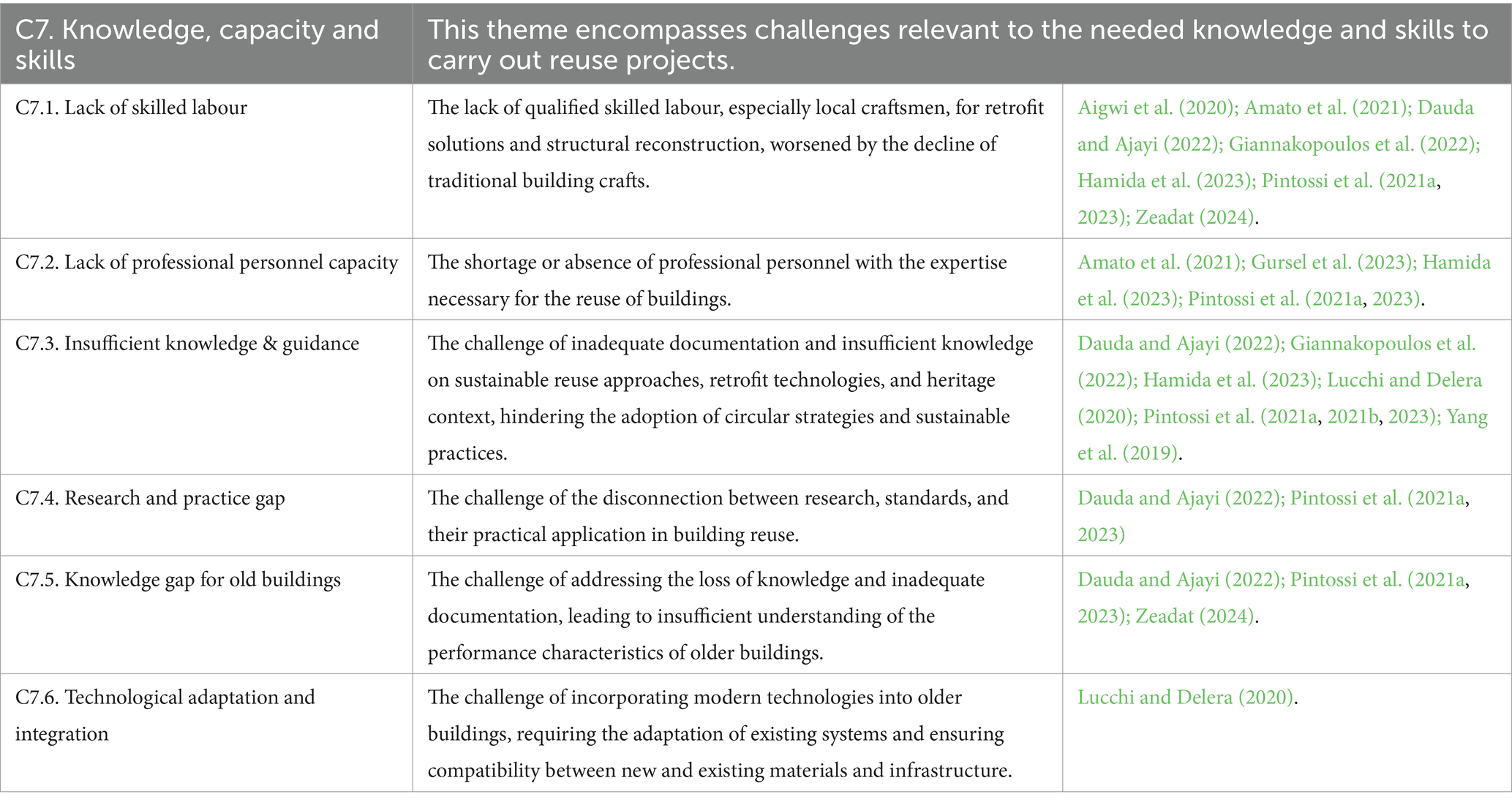
Table 9. An overview of the identified sub-challenges (codes) and their definitions in knowledge, capacity and skills theme.
3.1.8 Culture, perception and awareness
This theme addresses the social and cultural aspects of building reuse, focusing on Culture, Perception, and Awareness. It identifies six sub-challenges related to these aspects. Some challenges are related to awareness, such as the lack of understanding of the cultural and market value of building reuse, as well as insufficient public awareness, which results in low societal interest and desire for reuse projects. Other challenges pertain to perception, including the preconception that reuse is more costly than new construction and the varying ways in which heritage is conceptualized and assigned value. The low societal desire and such preconceptions are significant obstacles to reuse, as highlighted by scholars like Latham (2000), Velthuis and Spennemann (2007), and Amato et al. (2021). In his book Creative Reuse of Buildings, Latham (2000) notes that the real limitations are often those created by preconceptions and a lack of imagination, but once these hurdles are overcome, skill and innovation can follow. Additionally, maintenance culture presents a challenge, with issues such as poor management practices and inadequate upkeep of reused buildings. These sub-challenges are detailed in Table 10.
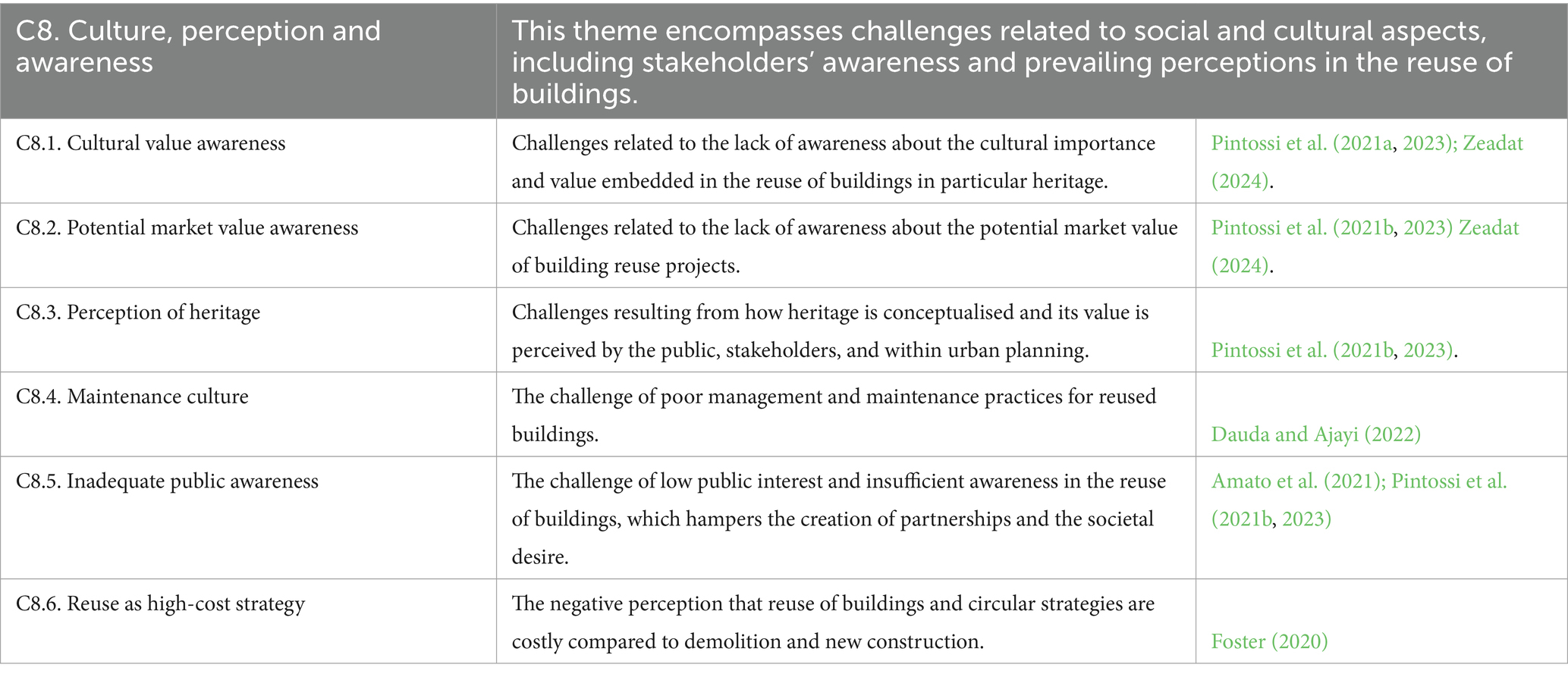
Table 10. A detailed overview of the identified sub-challenges and their definitions within the theme of culture, perception, and awareness.
3.1.9 Surrounding community
The theme explores challenges in building reuse within local communities. It identifies six sub-challenges, which are detailed in Table 11. One key challenge is adapting to evolving lifestyle and community needs, which include both functional and psychological aspects. As Cellucci (2021) highlights, static constructions struggle to meet changing human requirements over time, particularly in standardized residences designed to accommodate a wide range of users within a limited number of typical units.
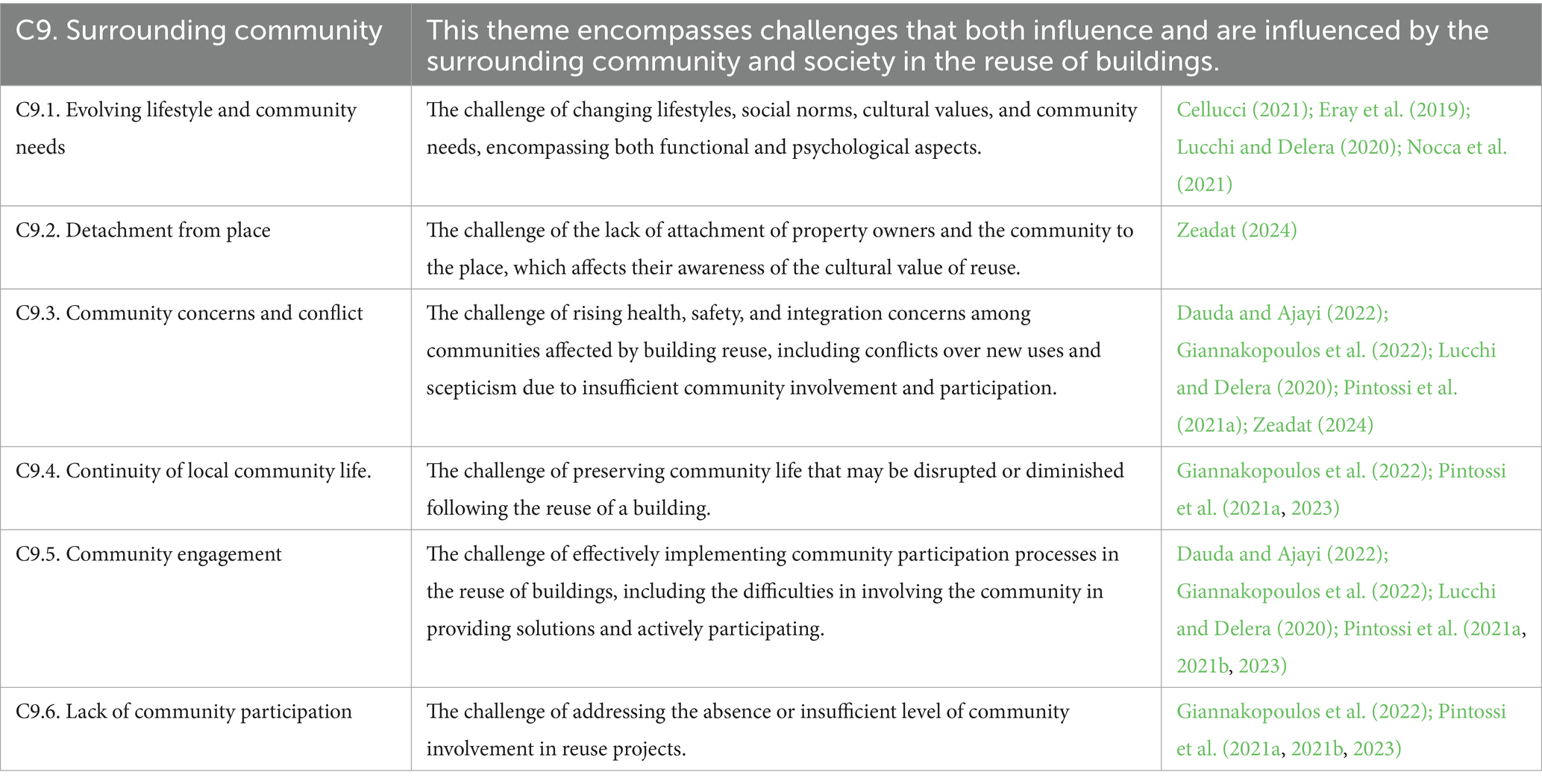
Table 11. A detailed overview of the identified sub-challenges and their definitions within the theme of the surrounding community.
Another challenge is the detachment from place, where property owners and residents lack attachment to their surroundings, diminishing recognition of the cultural value of reuse. Health, safety, and integration concerns often lead to conflicts over proposed new uses of buildings. These conflicts are further exacerbated by limited community participation and difficulties in engaging stakeholders. A lack of engagement can disrupt community continuity and create resistance to reuse projects. Low societal desire, shaped by these challenges, negatively affects the success of such projects. Addressing these issues is crucial to overcome preconceptions and ensure the viability of reuse efforts (Amato et al., 2021; Latham, 2000; Velthuis and Spennemann, 2007).
3.1.10 Timeline
The Timeline theme focuses on challenges related to the scheduling and duration of building reuse projects. It highlights three key sub-challenges. The first is managing delays, which may occur during the construction phase or due to regulatory processes. The second is accurately estimating project timelines, often complicated by unforeseen factors. The third is the potential for slower construction processes in reused buildings compared to new constructions, due to the complexity of working with existing structures. These challenges are further detailed in Table 12.

Table 12. A detailed overview of the identified sub-challenges and their definitions within the theme of timeline.
3.2 Interrelations between thematic categories
This section examines the interrelation between the challenges identified in the previous section and the scale at which they exist, as illustrated in Figure 7. The challenges of the reuse of buildings are not isolated but are interrelated and interdependent, where each challenge can influence and be influenced by others (Dauda and Ajayi, 2022). Pintossi et al. (2021a) similarly highlight that the literature on building reuse challenges reveals a network of interdependencies, emphasizing the need to identify these relationships to understand which challenges must be addressed as prerequisites for others. In this section, relationships between challenges are identified in two ways: first, through explicit connections evident in the data, and second, when sub-challenges are categorized under two broader thematic categories, indicating a linkage between these themes. In such cases, the sub-challenge acts as a relational factor bridging the two main challenges.
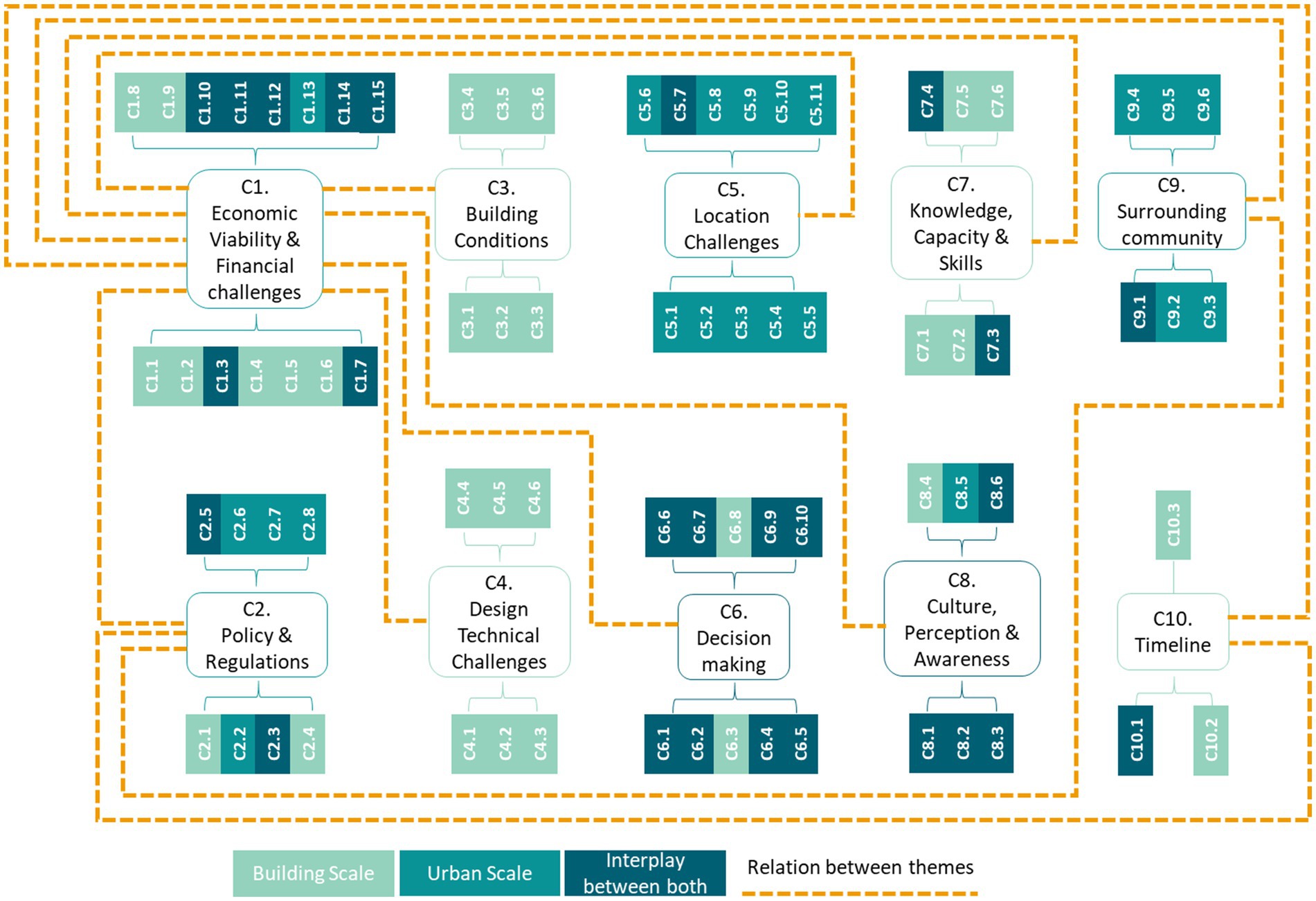
Figure 7. Diagram illustrating the interrelations between the challenges of reuse of buildings and the scale it is taking place. Source: Author.
Additionally, the challenges of building reuse are not confined to the building or site scale but may extend to broader contexts, including the urban scale (Pintossi et al., 2021a). This section attempts to identify and postulate the scales at which challenges exist whether it is urban scale or building scale or interplay between both as shown in Figure 7.
Economic viability emerges as a central concern in building reuse, exhibiting strong interconnections with all thematic categories and influencing, as well as being influenced by, other challenges. For instance, the challenge of sourcing compatible materials, often coupled with the difficulty of finding skilled labor, jeopardizes the economic viability of building reuse (Aigwi et al., 2020; Dauda and Ajayi, 2022; Lou et al., 2020; Zeadat, 2024). This highlights a relationship between the themes of knowledge, capacity, skills, design, technical challenges, and economic viability.
A strong link also exists between economic viability and policy and regulation challenges. Insufficient access to incentives significantly influences investor decisions and, in turn, the overall financial feasibility of reuse projects (Aigwi et al., 2019). Similarly, compliance with regulations often leads to additional costs, such as higher labor expenses or extensive renovations, impacting economic viability. This is particularly evident in cases where achieving environmental performance efficiency incurs high costs (Nocca et al., 2021).
Another notable relationship is between decision-making and economic viability. Decisions often involve balancing immediate economic gains against the long-term social, cultural, and financial benefits of reuse (Amado and Rodrigues, 2019; Foster, 2020; Pintossi et al., 2021a, 2021b).
The theme of location challenges is closely tied to economic viability, as the specific characteristics and context of a location directly impact the reuse potential and financial feasibility of existing buildings (Zeadat, 2024). This relationship stems from how location factors influence both the practical aspects of building adaptation (Location Challenges Theme) and the associated financial implications (Economic Challenges Theme). Similarly, building conditions, such as physical decay, can significantly increase redevelopment costs, further complicating economic viability (Gursel et al., 2023).
Moreover, the theme of culture, perception, and awareness intersects with economic viability, particularly regarding the negative perception that building reuse and circular strategies are more expensive than demolition and new construction. Additionally, low public interest and insufficient awareness of building reuse hinder the formation of partnerships and adversely affect the economic aspects of reuse (Foster, 2020).
Finally, the timeline of reuse projects is strongly tied to economic viability. Delays in regulatory approvals or difficulties in accurately estimating project timelines can directly impact financial outcomes (Aigwi et al., 2021; Eray et al., 2019; Gursel et al., 2023; Pintossi et al., 2021a, 2023; Zeadat, 2024).
Another relationship between thematic categories is the connection between policy and regulations and the surrounding community. This relationship reflects an inherent tension between compliance with rigid building regulations and the need to adapt to evolving community lifestyles and spatial demands. For instance, building regulations, particularly those related to heritage preservation, can conflict with market demands driven by changing community needs (Knippschild and Zoellter, 2021). Political circumstances further influence this dynamic by shaping the extent of community engagement in reuse processes, either facilitating or hindering their involvement (Giannakopoulos et al., 2022; Pintossi et al., 2021a, 2021b, 2023).
A relationship between the policy and regulations theme and the timeline theme emerges from delays caused by regulatory agencies, particularly during approval processes. Such delays often lead to significant time losses (Aigwi et al., 2021; Eray et al., 2019; Pintossi et al., 2021a, 2023). Similarly, a connection exists between the location challenges theme and the building condition theme, especially in disaster-prone areas. The physical state of a building, particularly its adaptability to adverse conditions, may necessitate specific reinforcements, further complicating redevelopment efforts (Aigwi et al., 2019; Cellucci, 2021; Zeadat, 2024).
4 Discussion and reflections
This research attempted to explore and identify the challenges of reuse of buildings from a multidisciplinary and global perspective. The findings reveal that while these challenges span diverse disciplines and scales, they are deeply interconnected and interdependent (Dauda and Ajayi, 2022; Pintossi et al., 2021a), Notably, there is a significant link between most challenges and economic factors, underscoring the critical role of financial constraints as a primary barrier to building reuse.
Additionally, heritage buildings emerge as a cross-cutting concern across several thematic challenges. Their unique characteristics influence a variety of sub-challenges within different themes. For example, under building conditions, meeting modern environmental standards or adapting to contemporary living requirements can be particularly difficult when preservation obligations restrict sustainable upgrades or functional adaptations (Aigwi et al., 2020; Cellucci, 2021; Foster, 2020; Jiang et al., 2023; Nocca et al., 2021; Zeadat, 2024). Within decision-making, the management and governance structures of heritage assets often complicate the reuse process (Pintossi et al., 2023). In terms of policy and regulations, protection laws—while essential—can introduce rigidities that hinder reuse processes (Aigwi et al., 2019, 2020). The knowledge, capacity, and skills theme also reflects a lack of accessible documentation and technical expertise related to heritage buildings (Dauda and Ajayi, 2022; Giannakopoulos et al., 2022; Hamida et al., 2023; Lucchi and Delera, 2020; Pintossi et al., 2023; Yang et al., 2019). Lastly, within culture, perception, and awareness theme, the ways heritage is conceptualized and valued significantly shape attitudes toward reuse (Pintossi et al., 2021b, 2023). This indicates that the nature of the building as a heritage asset deeply intersects with and intensifies multiple reuse challenges.
Challenges of reuse of buildings extend beyond tangible technical issues, such as design considerations and adherence to codes and legal requirements (Lucchi and Delera, 2020; Pintossi et al., 2021a), which were the primary focus of early research on the topic (Lou et al., 2020). For instance, societal attitudes and a lack of public desire in reusing buildings can significantly hinder such efforts, potentially preventing reuse altogether (Amato et al., 2021; Velthuis and Spennemann, 2007). Rossitti et al. (2022) argue that when heritage reuse is approached solely from a financial perspective, it can lead to outcomes that alienate the local community and strip the space of its social significance. They highlight the need to consider reuse decisions impact on both community and economy to ensure sustainable and meaningful results.
Additionally, the role of government and public administration is pivotal in facilitating the transition to building reuse and governing the decision-making process (Amato et al., 2021). Scholars frequently highlight the insufficient public incentives, particularly funding, as a significant barrier to the successful implementation of building reuse (Aigwi et al., 2019, 2021; Amato et al., 2021; Dauda and Ajayi, 2022; Dell’Ovo et al., 2021; Hamida et al., 2023; Nocca et al., 2021; Pintossi et al., 2021a; Yang et al., 2019). These findings suggest that regulatory reforms, underpinned by strong government involvement, are necessary to address these challenges. Clear policy frameworks, targeted incentives, and the revision of outdated regulations—especially for heritage buildings—are essential steps to reduce barriers and enable more effective reuse practices.
Although the challenges identified in this research are drawn from various contexts, notable similarities and alignments can be observed across these settings. While these challenges are often context-dependent, several studies highlight their relevance across diverse regions. For instance, Pintossi et al. (2023) note that challenges identified in multiple European cities are representative of the broader European context. Furthermore, some of these issues appear applicable beyond Europe, as they have also been reported in case studies from Asia, North America, and Oceania. Similarly, Zeadat (2024) demonstrates alignment between findings from his research in the Jordanian context and those in international literature such as, the challenge of a shortage of skilled labor.
Among the 75 identified sub-challenges, only two—C3.1 Environmental Performance Efficiency and C5.1 Disaster-Prone Areas—directly address environmental concerns, while the majority are categorized as economic or social. A recurring debate in research highlights the difficulty of reused buildings meeting modern environmental performance standards as effectively as new buildings (Aigwi et al., 2020; Foster, 2020; Nocca et al., 2021). This challenge is particularly evident in older apartment buildings with complex exterior, such as Art Nouveau, which are challenging to insulate (Navratil et al., 2021).
The limited focus on environmental challenges could stem from the inherent environmental benefits of reusing buildings or a predominant reliance on energy efficiency as the primary metric for environmental assessment. However, scholars like Young (2008) argue that building reuse is highly sustainable when evaluated through a broader lens. Beyond energy efficiency, factors such as embodied energy, reduced demolition waste, and decreased reliance on new materials are widely recognized as critical strategies for decarbonization and efficient resource utilization (Aigwi et al., 2020; Dauda and Ajayi, 2022; Itard and Klunder, 2007). Reuse of buildings strategies can better address these concerns by shifting the focus away from a predominant reliance on energy efficiency as the sole metric for environmental assessment, and instead promoting a broader evaluation aligned with circular economy principles.
Theoretically, reuse is often considered faster and more cost-effective than demolition and rebuilding (Aigwi et al., 2018, 2020; Bullen and Love, 2011; Douglas, 2006; Heath, 2001). For example, redeveloping a specific floor area of an existing building can take half the time needed to demolish and rebuild the same area (Aigwi et al., 2020). Practically, however, challenges such as rigid regulations, delays in regulatory compliance (Aigwi et al., 2021; Eray et al., 2019; Pintossi et al., 2021a, 2023), or the need for extensive structural reconstruction (Nocca et al., 2021) can undermine these economic and time-saving benefits.
From the perspective of a circular economy model, reuse of buildings, despite its additional costs, offers advantages that go beyond economics. These include significant environmental and social benefits throughout the building’s life cycle (Nocca et al., 2021). For instance, reusing abandoned housing stock has been linked to improved environmental and social sustainability, contributing to the transition towards a circular built environment (Owojori and Okoro, 2022).
The challenges of reuse of buildings are not confined to the building scale but extend to broader urban and community contexts. Pintossi et al. (2021a) emphasize that reuse, particularly of cultural heritage, involves challenges at both the site and urban scales. Similarly, Amado and Rodrigues (2019) highlight the importance of considering the urban scale rather than treating buildings as isolated entities. This perspective underscores the need to view buildings as part of interconnected systems, where their location and relationships within the urban environment are critical. In this regard, Cellucci (2021) proposes a multi-level framework for reuse that spans several scales: the room level, home level, building level, urban level, and user and community level. These scales are vital for identifying and addressing the challenges of reuse and understanding their broader implications.
Based on the 81 documents analyzed, there is limited research addressing the relationship between depopulation or shrinking cities and building reuse as a challenge. Among the reviewed papers, only one explicitly identified depopulation as a challenge. For instance, Pintossi et al. (2021a) highlighted novel challenges beyond design and legal codes, including depopulation. This research gap is significant, especially given studies suggesting that reuse may not always yield positive outcomes in areas with high vacancy rates. Reuse initiatives tend to be more viable when surrounding spaces are occupied and actively utilized (Armstrong et al., 2023). Similarly, Friedrich and Roessler (2023) note that low participation in public life often leads to outmigration, further complicating urban regeneration efforts.
The findings underscore the multifaceted nature of challenges in building reuse, highlighting the need for a cohesive approach to address economic, social, and environmental barriers. This aligns with Amato et al. (2021), who emphasize that the central challenge lies in finding innovative solutions to reconcile these perspectives. Furthermore, identifying the right stakeholders, particularly those most influential in the reuse process (Pintossi et al., 2021b), is crucial. The next step involves pinpointing and connecting these influential stakeholders for each challenge theme to develop an effective and innovative decision-support tool that integrates and reconciles these various aspects.
5 Conclusion
The analysis of the identified challenges in building reuse led to the development of a conceptual framework, illustrated in Figure 7, comprising three main components. First, it establishes 10 overarching themes as the foundation of the framework. Second, it maps the interrelations between these challenges. Lastly, it considers the scale at which these challenges occur. This framework offers a structured and comprehensive understanding of the challenges associated with buildings reuse, particularly in residential buildings.
The first component of the framework stems from 75 identified sub-challenges, which were categorized into 10 overarching themes: (1) economic viability and financial challenges, (2) building conditions, (3) design-technical challenges, (4) location challenges, (5) decision making, (6) policy and regulations, (7) knowledge, capacity, and skills, (8) culture, perception, and awareness, (9) surrounding community, and (10) timeline.
These challenges, spanning various disciplines and scales, are deeply interconnected, emphasizing the need for a multidisciplinary approach in addressing building reuse. Notably, many of these themes are closely tied to economic and financial concerns, underscoring the significant role that economic viability plays in building reuse decisions.
The scale at which these challenges arise often extends beyond the building and site levels, encompassing broader urban and community contexts or an interplay between both. Given the multidisciplinary nature of these challenges, their impact naturally spans different scales. However, certain challenges tend to be more dominant at specific scales. For instance, C3. Building conditions and C4. Design technical challenges primarily occur at the building scale, while C2. Policy and Regulations challenges and C5. Location challenges are more prevalent at the urban scale or at the intersection of the building and urban scales.
Further analysis of the findings reveals that most sub-challenges in building reuse fall under economic and social categories, with only two—C3.1 Environmental Performance Efficiency and C5.1 Disaster-Prone Areas—directly addressing environmental concerns. This limited environmental focus may stem from the assumption that building reuse is inherently benefits the environment or from a predominant focus on energy efficiency, which often overlooks broader environmental considerations such as embodied energy, demolition waste reduction, and minimizing the use of new materials. These insights suggest that the viability of building reuse can be significantly enhanced when framed through the lens of circular economy principles. By integrating circular goals, the focus expands beyond functional or aesthetic reuse to encompass deeper sustainability objectives, including minimizing material extraction, reducing construction waste, and maximizing the life cycle value of existing structures.
However, achieving effective building reuse requires active involvement from governments and public administrations, as their role is crucial in shaping policies and regulations that facilitate this transition. Regulatory reforms, clear policy frameworks, and targeted incentives—particularly for heritage buildings—are needed to overcome existing barriers and support more effective reuse practices. This underscores the need for decision-support tools to aid policy-making and implementation. Equally important is the influence of societal attitudes, as a strong social desire and acceptance of reuse are essential for its success. Without widespread public support, the transition may face significant obstacles despite government efforts.
To complement policy and public engagement efforts, addressing knowledge gaps is key to supporting effective building reuse. Based on the challenges identified under the knowledge gap theme, this study recommends targeted educational strategies, including training programs in traditional construction techniques, improved documentation and open access to information on the performance of existing buildings, and further research and dissemination of sustainable reuse practices.
Building upon the previous, future research should focus on two key areas: (1) mapping the relationships between influential stakeholders and the specific challenges they face or influence, and (2) developing innovative tools and strategies that balance the economic, social, and environmental dimensions of building reuse. The conceptual framework presented in this study offers a structured approach to identifying conflicting interests and supporting informed decision-making in building reuse. Furthermore, the findings highlight the importance of context in shaping reuse challenges, despite their relevance across diverse regions. Accordingly, future studies are encouraged to explore and validate these challenges in diverse contexts.
As part of a broader research strategy, the author plans to conduct comparative case studies in the next phase of the project. The proposed framework will guide expert interviews across two distinct urban environments, aiming to refine and validate the identified sub-challenges and their interdependencies in real-world settings. This framework will be further developed and integrated into a comprehensive decision support tool, designed to better coordinate the challenges and trade-offs involved in reuse strategies. Beyond this study, the framework will serve as a resource for other scholars and practitioners, enabling them to navigate the complexities of building reuse across varied contexts and contributing to future research directions in the field.
6 Research limitations
This research provides a comprehensive framework of challenges related to the reuse of residential buildings. The main challenge was synthesizing data from diverse disciplines and contexts into a comprehensive framework. While the results are thorough, they are not exhaustive due to the contextual specificity of reuse—a limitation inherent to its complexity.
Data availability statement
The original contributions presented in the study are included in the article/Supplementary material, further inquiries can be directed to the corresponding author.
Author contributions
LG: Conceptualization, Data curation, Formal analysis, Investigation, Methodology, Visualization, Writing – original draft, Writing – review & editing, Project administration.
Funding
The author(s) declare that financial support was received for the research and/or publication of this article. The corresponding author gratefully acknowledges receiving scholarship funding and support as part of the PhD program at the Dresden Leibniz Graduate School (DLGS), a joint facility of the Leibniz Institute of Ecological Urban and Regional Development (IOER) and the TUD Dresden University of Technology. The Article Processing Charge (APC) was funded by the joint publication funds of the TUD Dresden University of Technology—including the Carl Gustav Carus Faculty of Medicine—and the SLUB Dresden, as well as through the Open Access Publication Funding of the DFG (German Research Foundation).
Conflict of interest
The author declares that the research was conducted in the absence of any commercial or financial relationships that could be construed as a potential conflict of interest.
Generative AI statement
The author declares that Gen AI was used in the creation of this manuscript. The text coding process was primarily conducted manually by the author, with supplementary support from the AI language model, ChatGPT. Initially, the author performed manual coding to identify key themes and patterns. The coded text was then analyzed using ChatGPT to explore potential additional codes or insights that might have been overlooked. However, the author retained full control over the final categorization, carefully evaluating the AI-generated suggestions before determining whether to incorporate, refine, or disregard them. This approach ensured that the coding process remained rigorous and reflective of the author’s analytical framework while leveraging AI as an assistive tool for enhancing comprehensiveness. Additionally, ChatGPT was used as a paraphrasing aid to refine wording while ensuring clarity and coherence, with the author making all final revisions.
Publisher’s note
All claims expressed in this article are solely those of the authors and do not necessarily represent those of their affiliated organizations, or those of the publisher, the editors and the reviewers. Any product that may be evaluated in this article, or claim that may be made by its manufacturer, is not guaranteed or endorsed by the publisher.
Supplementary material
The Supplementary material for this article can be found online at: https://www.frontiersin.org/articles/10.3389/frsc.2025.1576288/full#supplementary-material
Supplementary File 1 | Excel sheet containing extracted qualitative data and coding used in the review. This file includes excerpts from the reviewed articles, corresponding thematic codes, and reference details.
References
Aigwi, I. E., Egbelakin, T., and Ingham, J. (2018). Efficacy of adaptive reuse for the redevelopment of underutilised historical buildings: towards the regeneration of New Zealand’s provincial town centres. Int. J. Build. Pathol. Adapt. 36, 385–407. doi: 10.1108/IJBPA-01-2018-0007
Aigwi, I. E., Egbelakin, T., Ingham, J., Phipps, R., Rotimi, J., and Filippova, O. (2019). A performance-based framework to prioritise underutilised historical buildings for adaptive reuse interventions in New Zealand. Sustain. Cities Soc. 48:101547. doi: 10.1016/j.scs.2019.101547
Aigwi, I. E., Ingham, J., Phipps, R., and Filippova, O. (2020). Identifying parameters for a performance-based framework: towards prioritising underutilised historical buildings for adaptive reuse in New Zealand. Cities 102:102756. doi: 10.1016/j.cities.2020.102756
Aigwi, I. E., Phipps, R., Ingham, J., and Filippova, O. (2021). Characterisation of adaptive reuse stakeholders and the effectiveness of collaborative rationality towards building resilient urban areas. Syst. Pract. Action Res. 34, 141–151. doi: 10.1007/s11213-020-09521-0
Amado, M., and Rodrigues, E. (2019). A heritage-based method to urban regeneration in developing countries: the case study of Luanda. Sustainability 11:4105. doi: 10.3390/su11154105
Amato, A., Andreoli, M., and Rovai, M. (2021). Adaptive reuse of a historic building by introducing new functions: a scenario evaluation based on participatory MCA applied to a former Carthusian monastery in Tuscany, Italy. Sustainability 13:2335. doi: 10.3390/su13042335
Armstrong, G., Wilkinson, S., and Cilliers, E. J. (2023). A framework for sustainable adaptive reuse: understanding vacancy and underuse in existing urban buildings. Front. Sustain. Cities 5:985656. doi: 10.3389/frsc.2023.985656
Assefa, G., and Ambler, C. (2017). To demolish or not to demolish: life cycle consideration of repurposing buildings. Sustain. Cities Soc. 28, 146–153. doi: 10.1016/j.scs.2016.09.011
Baeing, A. S., and Wong, C. (2012). Brownfield residential development: what happens to the most deprived neighbourhoods in England? Urban Stud. 49, 2989–3008. doi: 10.1177/0042098012439108
Baker, H., Moncaster, A., and Al-Tabbaa, A. (2017). Decision-making for the demolition or adaptation of buildings. Proc. Inst. Civ. Eng. 170, 144–156. doi: 10.1680/jfoen.16.00026
Bullen, P., and Love, P. (2011). Factors influencing the adaptive re-use of buildings. J. Eng. Des. Technol. 9, 32–46. doi: 10.1108/17260531111121459
Capolongo, S., Sdino, L., Dell’Ovo, M., Moioli, R., and Della Torre, S. (2019). How to assess urban regeneration proposals by considering conflicting values. Sustainability 11:3877. doi: 10.3390/su11143877
Cellucci, C. (2021). Circular economy strategies for adaptive reuse of residential building. VITRUVIO 6, 110–121. doi: 10.4995/vitruvio-ijats.2021.15404
Creswell, J. W. (2014). Research design: Qualitative, quantitative, and mixed methods approaches. 3rd. Edn. Los Angeles: SAGE Publ.
Cruzes, D. S., and Dyba, T. (2011). Recommended steps for thematic synthesis in software engineering, in: 2011 International Symposium on Empirical Software Engineering and Measurement. Presented at the 2011 5th International Symposium on Empirical Software Engineering and Measurement (ESEM 2011), IEEE, Banff, AB, pp. 275–284. doi: 10.1109/ESEM.2011.36
Dauda, J. A., and Ajayi, S. O. (2022). Understanding the impediments to sustainable structural retrofit of existing buildings in the UK. J. Build. Eng. 60:105168. doi: 10.1016/j.jobe.2022.105168
Dell’Anna, F. (2022). What advantages do adaptive industrial heritage reuse processes provide? An econometric model for estimating the impact on the surrounding residential housing market. Heritage 5, 1572–1592. doi: 10.3390/heritage5030082
Dell’Ovo, M., Dell’Anna, F., Simonelli, R., and Sdino, L. (2021). Enhancing the cultural heritage through adaptive reuse. A multicriteria approach to evaluate the Castello Visconteo in Cusago (Italy). Sustainability 13:4440. doi: 10.3390/su13084440
Della Spina, L., Carbonara, S., Stefano, D., and Viglianisi, A. (2023). Circular evaluation for ranking adaptive reuse strategies for abandoned industrial heritage in vulnerable contexts. Buildings 13:458. doi: 10.3390/buildings13020458
Eray, E., Sanchez, B., and Haas, C. (2019). Usage of interface management system in adaptive reuse of buildings. Buildings 9:105. doi: 10.3390/buildings9050105
Ferretti, V., Bottero, M., and Mondini, G. (2014). Decision making and cultural heritage: an application of the multi-attribute value theory for the reuse of historical buildings. J. Cult. Herit. 15, 644–655. doi: 10.1016/j.culher.2013.12.007
Foster, G. (2020). Circular economy strategies for adaptive reuse of cultural heritage buildings to reduce environmental impacts. Resour. Conserv. Recycling 152:104507. doi: 10.1016/j.resconrec.2019.104507
Foster, G., and Saleh, R. (2021). The adaptive reuse of cultural heritage in European circular city plans: a systematic review. Sustainability 13:2889. doi: 10.3390/su13052889
Friedrich, K., and Roessler, S. (2023). Built space hinders lived space: social encounters and appropriation in large housing estates. Urban Plan. 8, 145–161. doi: 10.17645/up.v8i4.6448
Giannakopoulos, D., Karekou, Z., Menegaki, E., Tsilimantou, E., Ioannidis, C., Maistrou, E., et al. (2022). Reuse of historic buildings in the medieval city of Rhodes to comply with the needs of sustainable urban development. Land 11:1214. doi: 10.3390/land11081214
Gravagnuolo, A., Angrisano, M., Bosone, M., Buglione, F., De Toro, P., and Girard, L. F. (2024). Participatory evaluation of cultural heritage adaptive reuse interventions in the circular economy perspective: a case study of historic buildings in Salerno (Italy). J. Urban Manag. 13, 107–139. doi: 10.1016/j.jum.2023.12.002
Guo, N., Chan, E. H. W., and Yung, E. H. K. (2021). Alternative governance model for historical building conservation in China: from property rights perspective. Sustainability 13:203. doi: 10.3390/su13010203
Gursel, A. P., Shehabi, A., and Horvath, A. (2023). What are the energy and greenhouse gas benefits of repurposing non-residential buildings into apartments? Resour. Conserv. Recycling 198:107143. doi: 10.1016/j.resconrec.2023.107143
Hamida, M. B., Remøy, H., Gruis, V., and Jylhä, T. (2023). Circular building adaptability in adaptive reuse: multiple case studies in the Netherlands. J. Eng. Des. Technol. 23, 161–183. doi: 10.1108/JEDT-08-2022-0428
Heath, T. (2001). Adaptive re-use of offices for residential use. Cities 18, 173–184. doi: 10.1016/S0264-2751(01)00009-9
Itard, L., and Klunder, G. (2007). Comparing environmental impacts of renovated housing stock with new construction. Build. Res. Inf. 35, 252–267. doi: 10.1080/09613210601068161
Jiang, L., Lucchi, E., and Del Curto, D. (2023). Adaptive reuse and energy transition of built heritage and historic gardens: the sustainable conservation of casa Jelinek in Trieste (Italy). Sustain. Cities Soc. 97:104767. doi: 10.1016/j.scs.2023.104767
Jin, X., Chin, T., Yu, J., Zhang, Y., and Shi, Y. (2020). How government’s policy implementation methods influence urban villagers’ acceptance of urban revitalization programs: evidence from China. Land 9:77. doi: 10.3390/land9030077
Knippschild, R., and Zoellter, C. (2021). Urban regeneration between cultural heritage preservation and revitalization: experiences with a decision support tool in eastern Germany. LAND 10:547. doi: 10.3390/land10060547
Lanz, F., and Pendlebury, J. (2022). Adaptive reuse: a critical review. J. Archit. 27, 441–462. doi: 10.1080/13602365.2022.2105381
Lou, E. C. W., Chan, P. W., and Hamzah, N. (2020). Heritage adaptation beyond the technical: conflicts and compromise between social, environmental and economic sustainability. Int. J. Build. Pathol. Adapt. 38, 257–261. doi: 10.1108/IJBPA-04-2020-112
Lucchi, E., and Delera, A. C. (2020). Enhancing the historic public social housing through a user-centered design-driven approach. Buildings 10:159. doi: 10.3390/buildings10090159
Maselli, G., Cucco, P., Nestico, A., and Ribera, F. (2024). Historical heritage-multicriteria decision method (H-MCDM) to prioritize intervention strategies for the adaptive reuse of valuable architectural assets. METHODSX 12:102487. doi: 10.1016/j.mex.2023.102487
Milovanovic, A., Dragutinovic, A., Nikezic, A., Pottgiesser, U., Stojanovski, M., Ivanovska Deskova, A., et al. (2022). Rehabilitation of mass housing as a contribution to social equality: insights from the east-west European academic dialogue. Sustainability 14:8106. doi: 10.3390/su14138106
Munarim, U., and Ghisi, E. (2016). Environmental feasibility of heritage buildings rehabilitation. Renew. Sust. Energ. Rev. 58, 235–249. doi: 10.1016/j.rser.2015.12.334
Navratil, J., Klusacek, P., Martinat, S., and Dvorak, P. (2021). Emergence of centralized (collective) and decentralized (individual) environmentally friendly solutions during the regeneration of a residential building in a post-socialist city. Land 10:524. doi: 10.3390/land10050524
Nocca, F., De Toro, P., and Voysekhovska, V. (2021). Circular economy and cultural heritage conservation: a proposal for integrating level(s) evaluation tool. Aestimum 78, 105–143. doi: 10.36253/aestim-10119
Norris, M., and Oppenheim, C. (2007). Comparing alternatives to the web of science for coverage of the social sciences’ literature. J. Informetr. 1, 161–169. doi: 10.1016/j.joi.2006.12.001
Nowell, L. S., Norris, J. M., White, D. E., and Moules, N. J. (2017). Thematic analysis: striving to meet the trustworthiness criteria. Int J Qual Methods 16:160940691773384. doi: 10.1177/1609406917733847
Nzimande, N. P. (2023). Stakeholders’ perceptions of urban regeneration: the case of Kis-Pongrác in Budapest. Environ. Res. Commun. 5:055009. doi: 10.1088/2515-7620/accfeb
Owojori, O. M., and Okoro, C. (2022). The private sector role as a key supporting stakeholder towards circular economy in the built environment: a scientometric and content analysis. Buildings 12:695. doi: 10.3390/buildings12050695
Owojori, O., Okoro, C., and Chileshe, N. (2021). Current status and emerging trends on the adaptive reuse of buildings: a bibliometric analysis. Sustainability 13:11646. doi: 10.3390/su132111646
Page, M. J., McKenzie, J. E., Bossuyt, P. M., Boutron, I., Hoffmann, T. C., Mulrow, C. D., et al. (2021). The PRISMA 2020 statement: an updated guideline for reporting systematic reviews. BMJ 372:n71. doi: 10.1136/bmj.n71
Pintossi, N., Kaya, D. I., and Roders, A. P. (2021a). Assessing cultural heritage adaptive reuse practices: multi-scale challenges and solutions in Rijeka. Sustainability 13:3603. doi: 10.3390/su13073603
Pintossi, N., Kaya, D. I., and Roders, A. P. (2021b). Identifying challenges and solutions in cultural heritage adaptive reuse through the historic urban landscape approach in Amsterdam. Sustainability 13:5547. doi: 10.3390/su13105547
Pintossi, N., Kaya, D. I., van Wesemael, P., and Roders, A. P. (2023). Challenges of cultural heritage adaptive reuse: a stakeholders-based comparative study in three European cities. Habitat Int. 136:102807. doi: 10.1016/j.habitatint.2023.102807
Prasetyani, D., Destiningsih, R., and Rosalia, A. C. T. (2023). Community-based empowerment: semi-systematic literature review (SSLR). Optimum J. Ekon. Pembang. 12, 213–222. doi: 10.12928/optimum.v12i2.6541
Rossitti, M., Oteri, A. M., Sarnataro, M., and Torrieri, F. (2022). La dimensione sociale del riuso del patrimonio architettonico. Riflessioni teoriche a partire da un caso studio in Campania. AHR, 178–211. doi: 10.14633/AHR354
Rusci, S., Altafini, D., and Di Pinto, V. (2021). Urban demolition: application of blight elimination programs and flood buyout programs to the Italian case. Sustainability 13:9412. doi: 10.3390/su13169412
Shahi, S., Esnaashary Esfahani, M., Bachmann, C., and Haas, C. (2020). A definition framework for building adaptation projects. Sustain. Cities Soc. 63:102345. doi: 10.1016/j.scs.2020.102345
Snyder, H. (2019). Literature review as a research methodology: an overview and guidelines. J. Bus. Res. 104, 333–339. doi: 10.1016/j.jbusres.2019.07.039
Thornton, B. J. (2011). The greenest building (is the one that you don’t build!): effective techniques for sustainable adaptive reuse/renovation. J. Green Build. 6, 1–7. doi: 10.3992/jgb.6.1.1
Uttley, L., Quintana, D. S., Montgomery, P., Carroll, C., Page, M. J., Falzon, L., et al. (2023). The problems with systematic reviews: a living systematic review. J. Clin. Epidemiol. 156, 30–41. doi: 10.1016/j.jclinepi.2023.01.011
Vardopoulos, I. (2019). Critical sustainable development factors in the adaptive reuse of urban industrial buildings. A fuzzy DEMATEL approach. Sustain. Cities Soc. 50:101684. doi: 10.1016/j.scs.2019.101684
Velthuis, K., and Spennemann, D. H. R. (2007). The future of defunct religious buildings: Dutch approaches to their adaptive re-use. Cult. Trends 16, 43–66. doi: 10.1080/09548960601106979
WEF (2016). The global risks report 2016 (no. 080116), 11th edition. World economic forum within the framework of the global competitiveness and risks team, world economic forum.
Wilkes, J. A., and Packard, R. T. (Eds.) (1988). Encyclopedia of architecture: Design, engineering & construction. New York: Wiley.
Wong, G., Greenhalgh, T., Westhorp, G., Buckingham, J., and Pawson, R. (2013). RAMESES publication standards: meta-narrative reviews. BMC Med. 11:20. doi: 10.1186/1741-7015-11-20
Xia, S., Liu, B., and Wang, H. (2024). Building categorization strategy guidance in the historic area renovation process. Sustainability 16:1576. doi: 10.3390/su16041576
Xie, H., Zheng, S., Zhai, Y., Yuan, J., and Li, Q. (2024). Unveiling urban regeneration risks in China: a social perspective. Sustainability 16:1671. doi: 10.3390/su16041671
Yang, X., Zhang, J., Shen, G. Q., and Yan, Y. (2019). Incentives for green retrofits: an evolutionary game analysis on public-private-partnership reconstruction of buildings. J. Clean. Prod. 232, 1076–1092. doi: 10.1016/j.jclepro.2019.06.014
Young, R. A. (2008). Striking gold: historic preservation and LEED. J. Green Build. 3, 24–43. doi: 10.3992/jgb.3.1.24
Yung, E. H. K., and Chan, E. H. W. (2012). Implementation challenges to the adaptive reuse of heritage buildings: towards the goals of sustainable, low carbon cities. Habitat Int. 36, 352–361. doi: 10.1016/j.habitatint.2011.11.001
Keywords: urban regeneration, circular economy, sustainable urban development, reuse of buildings, urban revitalization
Citation: Ghoz L (2025) A multidisciplinary categorization of challenges of reuse of residential buildings. Front. Sustain. Cities. 7:1576288. doi: 10.3389/frsc.2025.1576288
Edited by:
Udayangani Kulatunga, University of Moratuwa, Sri LankaReviewed by:
Mohammad Afrazi, Tarbiat Modares University, IranMarco Rossitti, Polytechnic University of Milan, Italy
Copyright © 2025 Ghoz. This is an open-access article distributed under the terms of the Creative Commons Attribution License (CC BY). The use, distribution or reproduction in other forums is permitted, provided the original author(s) and the copyright owner(s) are credited and that the original publication in this journal is cited, in accordance with accepted academic practice. No use, distribution or reproduction is permitted which does not comply with these terms.
*Correspondence: Lamiaa Ghoz, bC5naG96QGRsZ3MuaW9lci5kZQ==; bGFtaWFnaG96QGhvdG1haWwuY29t
 Lamiaa Ghoz
Lamiaa Ghoz
